ROBERT ZANGRILLO
 ART BASEL MIAMI SPECIAL
ART BASEL MIAMI SPECIAL
on a Mission to Leverage AI to Evolve Humanity






 ART BASEL MIAMI SPECIAL
ART BASEL MIAMI SPECIAL
on a Mission to Leverage AI to Evolve Humanity





Membership in Jet Club provides guaranteed availability, guaranteed hourly rates, and guaranteed access to our versatile fleet of 90+ Light, Midsize, and SuperMidsize aircraft.


Fractional provides a unique ownership experience with access to the new CJ3+ fleet, bonus hours on the entire flyExclusive fleet, and no monthly management fees.

Offering on-demand flights and servicing a myriad of specialized trip needs, flyExclusive accommodates clients with flexible, worldclass charter services.





Naked Diablo Tequila is a premium Tequila Brand in the exploding global Tequila market. We separate ourselves from all the other Tequila’s in the market with the word “Naked” on our label which encompasses the purest tequila: no added sugar, all natural ingredients, natural volcanic water and 100% Blue Webber Agave sustainably sourced both from the lowlands and highlands of Jalisco and then 2 times distilled at one of the finest distilleries in the Tequila Region.
We then created 8 incredible expressions and flavors based on the purity quality standards we’ve set as Naked Diablo’s Blanco, Reposado, Anejo, Extra Anejo, Vanilla, Cinnamon, Coffee, and Blanco 55% Extra Strength.

The Naked Diablo team spent 5 long years to get this right and to deliver a World Class Premium Tequila price affordably that delivers a quality line-up you would think you would have to pay more for. We assembled a team of visionaries, craftsmen and designers from around the globe, working towards one goal - to create the worlds most authentic tequilas.
Naked Diablo is currently in our initial launch phases in the States of California, Colorado, Georgia, Florida and Tennessee. In the next 6 weeks we will be opening Louisiana, Texas, Massachusetts, Rhode Island and the rest of New England and January 2023 will be our official launch in all these markets.
Today, Naked Diablo is available at Reserve Bar, an on-line retailer in 22 States at www.reservebar.com To find out more about our Premium Tequila’s please contact us at info@nakeddiablo.com

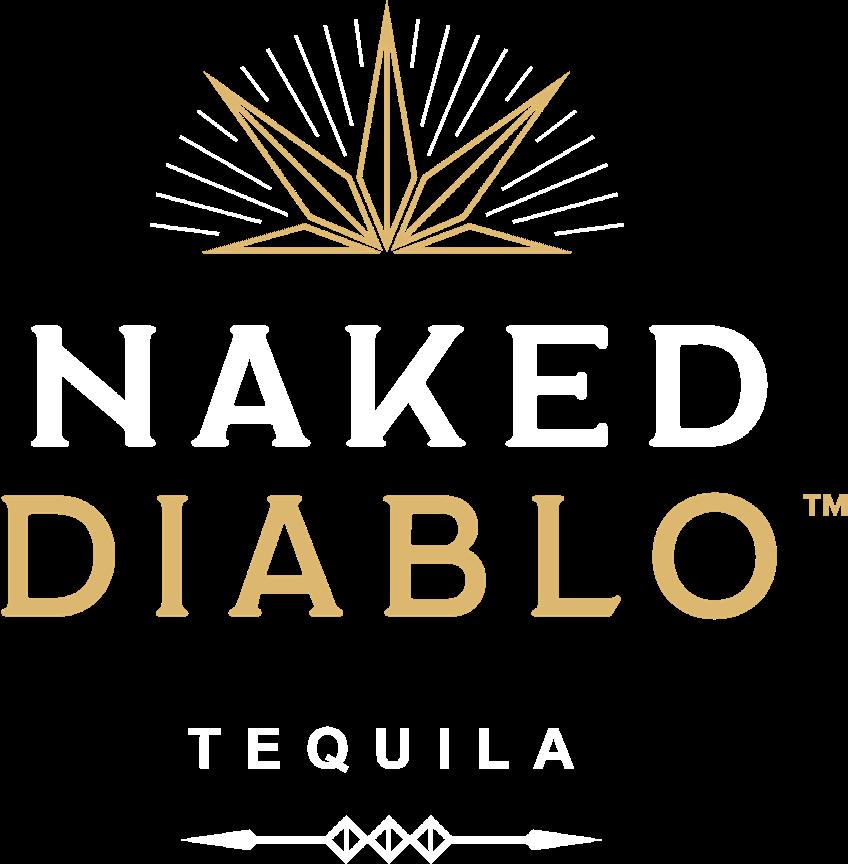

NANCY ZECKENDORF
A Small Town Girl With Big City Dreams
10 Eagle’s View Contrarian Macro Fund, Ltd.Wins HFM US Performance Award Plus Macro Thoughts…
By Neal Berger 14 BRIDGE A Web 3 Platform Empowering Consumers to Mint and Sell Their Own Data on the Blockchain
ByDavis Oliver 18
ROBERT ZANGRILLO
Tech & Real Estate Investor on a Mission to Leverage AI to Evolve Humanity

 By
By
Hillary Latos
How lowering your U.S. Tax liability may help Maximize Your Social Impact
ByMike Packman
ByHillary Latos 28 PHILIP EVERGOOD An Overlooked American Painter

By Michael Klein 34
Life With Art in the Digital Age NFT Artist Erin McGean’s Outlook on NFTs, the Metaverse and their Place in the Artworld By Mosaka Williamson 40 BLISSER
A Revolutionary Social Media Platform Connecting Celebrities with their Fans i n a Meaningful Way
By Adora Trostle
By Hillary Latos
1640 Society’s Exclusive Southampton Pre and Post Oceanfront Dinners
By Hillary Latos
Impact Wealth x 1640 Society Host A summer Luxury Escape in the Hamptons at Libbie Mugrabi’s Estate

By Hillary Latos

This holiday season we are excited to return to Art Basel Miami which was the inspiration for our Art Theme this issue. We featured the visionary tech and real estate investor Robert Zangrillo who is equally as passionate about collecting NFT art and his philanthropic endeavors as he is about developing advanced AI that will change the trajectory of humanity.

Another visionary we featured this month is Greg Pelleteri who is disrupting the data driven business model to give the earning power back to the consumer. A serial entrepreneur in the fintech world, Greg’s latest company is Bridge which uses the Web3 blockchain authentication platform for consumers to mint an individual NFT with their own data to sell to data collection brokers and tap into a $500 billion market.
This December the art world will descend upon the sunny shores of Miami for a whirlwind of fairs, soirees and hobnobbing as billions of dollars’ worth of assets will trade hands and record setting prices will set precedence for rare works. We spoke to art historian and curator Michael Klein, who curated Microsoft’s first art collection, to discover an overlooked American artist who was a social and cultural observer of life in the 1950s whose depictions closely resonate with what is going on today. As the art world has evolved into the digital space we also spoke to up-and-coming NFT artist Erin McGean who explains why NFTs have become a viable alternative asset investment and why they are here to stay.
We also featured Gallery Red founder Drew Aaron and his supermodel wife Hana Soukupova who have the midas touch when it comes to investing and collecting in blue chip and emerging artists. Drew tells us about his art investment strategy, which artists he sees as the next big thing, and why they traded the fast paced cosmopolitan life in NYC for the bucolic and relaxed pace of sunny Mallorca.
With a bevy of holiday soirees around the corner, fashion icon Grace Coddington served as our inspiration and muse. Our creative director Fredo Montes recreated Coddington’s iconic style with her flaming red hair and bold unapologetically glamorous looks.
We are excited to close the books on 2022 and look forward to ushering in 2023 with hope and optimism.
Hillary Latos Editor in Chiefhillary@impactwealthmagazine.com

Creating Wealth. Creating Impact. WINTER 2023 ISSUE
Hillary Latos EDITOR IN CHIEF Candice Beaumont MANAGING EDITOR Emil Pavlov ART DIRECTORFredo Montes FASHION DIRECTOR
Christopher Micaud, Udo Spreitzenbarth CONTRIBUTING PHOTOGRAPHERS
Amy Louise Bailey, Neal Berger, Yvonne Beri, Hollie McKay, Davis Oliver, Samantha Silveira, Caroline Singer, Adora Trostle, Mosaka Williamson, Michael Klein, Jason Ma CONTRIBUTING WRITERS
Angela Gorman, Adam Weiss PUBLISHERS
Martin Weiss ASSOCIATE PUBLISHER
Colin Thompson DIRECTOR OF SPONSORSHIP
DIRECTOR OF ADVERTISING
Impact Wealth Media LLC 222 Broadway, 18th Floor, New York, NY 212 542 3146
www.impactwealth.org info@impactwealth.org
Impact Wealth Magazine is published quarterly. Copyright 2022 by Impact Wealth Media. All rights reserved. Reproduction of any material from this issue is expressly forbidden without permission of the publisher. Unsolicited manuscripts and photographs are welcome on an exclusive basis, but Impact Wealth Magazine cannot be responsible for unsolicited materials submitted. Printed in the U.S.A.

Eagle’s View Contrarian Macro Fund, Ltd. earlier this past week won the HFM US Performance award for Newcomer Macro Fund of the year. I have taken the liberty of sharing some of my macro thoughts both with respect to fundamental drivers as well as market mechanics and our trading approach. The purpose of which is to provide insight into how I view markets and the inputs that inform our trading decisions on both a shorter-term and longer-term basis.
First, we must acknowledge that the activity of Friday, Oct. 21st was very unusual and unexpected. This is precisely the kind of thing that I need to look out for when keeping an open mind on the overall direction of trading on an intermediate or longer-term basis. The market will not bottom when I or anyone else expects. It will bottom at an unexpected time with unexpected and repeatedly unusual price action. When investors have asked how I trade, I’ve often said, “I read price action”. This is precisely what I mean when I’ve stated, “I read

price action”. I am continuously on guard and taking note of repeated and persistent price action that deviates from expectations. Friday was a data point but, only one data point.
In addition, I must also be aware that the S&P 500 is trading higher than where we were trading briefly on June 16/17 (the date of the very first 75 bps rate hike) despite Fed Funds being 150 bps higher (3.00% to 3.25% today versus June 16 1.50% to 1.75%) and US 10-year note yields being 90 bps higher today versus June 16 at 4.20% versus 3.30%. I must be aware of all of this in the back of my mind.
In the context of above, I must keep the one day’s price action and the other factors in perspective. While remaining aware of them, I must remain resolute (until proven otherwise with repeated unexpected price action), that the overall trend in all asset prices is lower. For now, I must look at Friday as an anomaly and remain steadfast that all the security prices that benefitted from the
ocean of liquidity injected into the system remain in a strong and rapid downtrend as this phenomenon of liquidity infusion reverses course. However, I am not blind. I must have a mix of resolute confidence in my overall thesis both fundamental and technical, combined with a healthy respect for market price action and a lack of ego to act when necessary. Currently, the best bet is the downtrend remains firmly intact. So, what did we learn on Friday, Oct. 21? I recap as follows:
The Fed told us very clearly that they are going to raise Fed Funds by 75 bps in early Nov. and 50 bps in Dec. This will take Fed Funds to 4.25% to 4.50% by year-end. This was always my expectation and is very consistent with prior Fed commentary. They told us this as we enter the blackout period prior to the Nov. 1 FOMC meeting so that there are no surprises in the market. They telegraphed this through Friday’s Fed speakers as well as the Wall Street Journal article. So, barring something shocking in markets, we now know where we’ll be for the balance of the year..
The Fed told us that in 2023 and beyond, they feel future rate hikes will likely be in 50 bps or even 25 bps increments. They feel they’ve now moved sufficiently quickly off 0% to their expected year-end rate of 4.25%-4.50%. Unusually high 75 bp rate hikes are no longer needed after Nov. 1 is the present thinking. They’ve indicated that future rate hikes needn’t be as desperately large in magnitude and, can be more measured. They will continue to monitor economic data and the impact of their bold moves during 2022 upon inflationary pressures and react as necessary.
They’ve indicated that they are keenly aware that the global financial system is at risk of breaking. There has been increasing chatter about the Fed not ceasing rate hikes until “something breaks”. We see stress in bond markets in the UK, the soaring US dollar, the reduced liquidity in the US treasury market and the conundrum faced by the BOJ. The Fed is at the point whereby they want to take down the temperature. Whether or not they can do that, remains to be seen and will largely hinge upon the path of inflationary pressures.
The BOJ intervened for a 2nd time in the past month to sell USD and buy Yen. The Yen is in a downward spiral. The first intervention did nothing to stem the decline of the Yen and historically, market-based interventions that are in contrast with fiscal and monetary policy will not work and will only serve to temporarily slow the pace of Yen declines in the short-term.
It is instructive and interesting to note that US bonds did not rally all that much or as sharply as stocks on Friday despite a stepping down of interest rate increases seemingly being the catalyst for the market moves. The likely cause of this is that the BOJ sold US treasuries to fund their intervention in the FX market. There is also market fear that further selling of US treasuries will occur on continued dollar sales associated with currency intervention.
The BOJ has a problem because global interest rates are rising while the BOJ stubbornly pursues an ultra-loose monetary policy and artificially maintains the 10year JGB rate at 0.25% or below. The BOJ now owns more than 50% of all JGBs outstanding and owns an astonishing 87% of all newly issued 10-year JGBs in its quest to maintain the 0.25% cap on 10-year JGBs.
These artificially low rates allow for a very lucrative Yen carry trade whereby investors borrow Yen at low interest rates, sell Yen and buy USD (or other currencies where yields are higher) to invest at higher interest rates thereby capturing this increasingly large spread and causing the Yen to spiral downward.
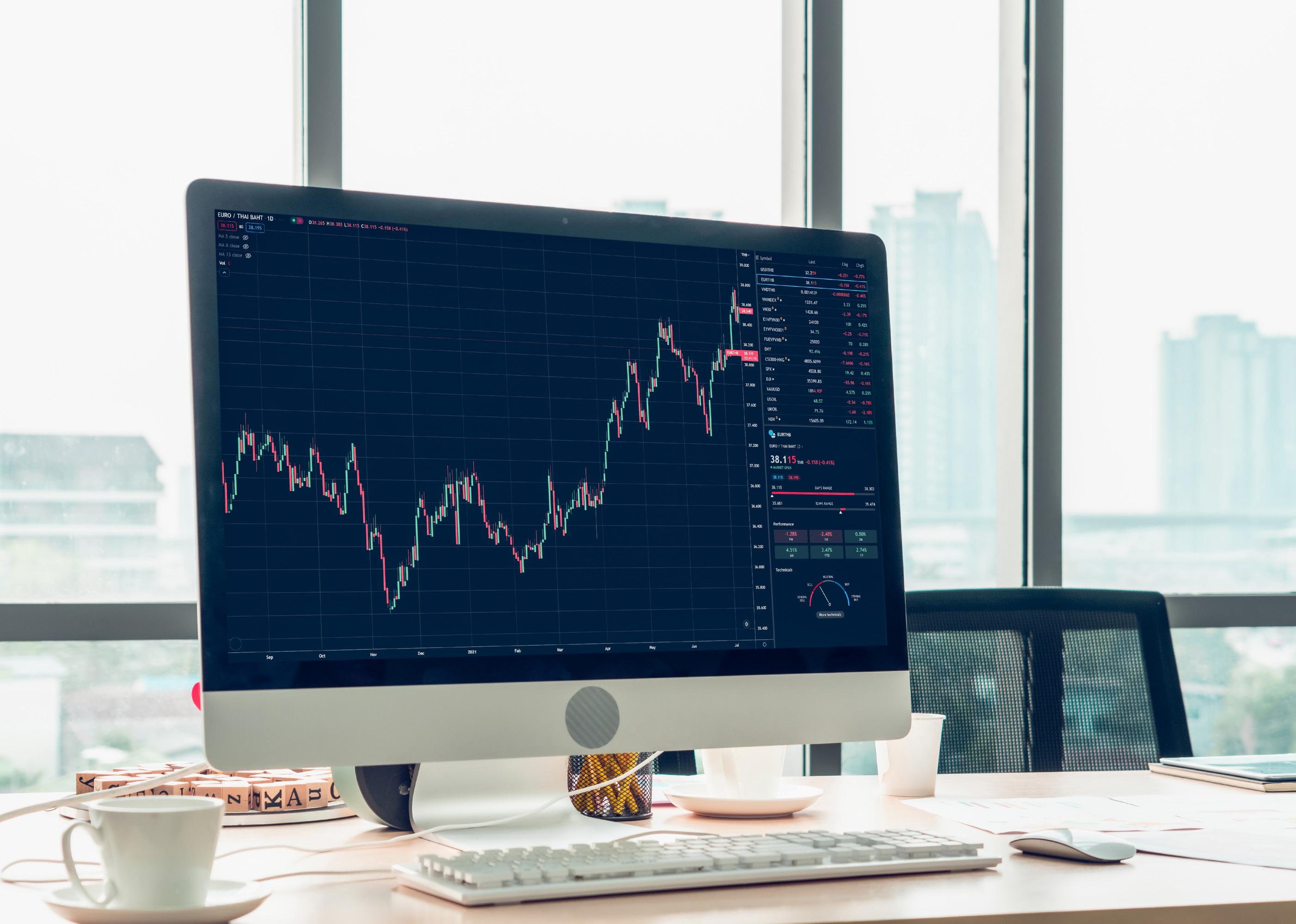
Astonishingly, the BOJ maintains the bank overnight rate at -0.10% along with the yield curve control of 0.25% 10-year JGBs despite rising global interest rates, a 3% inflation
rate and a Yen that is in a downward spiral. As the Yen continues to weaken, inflationary pressures in Japan continue to build and particularly on imported essentials such as food and energy. Producer prices in Japan are increasing rapidly growing at a 9.7% YoY pace as of Sept., 2022. The next BOJ meeting at the end of October will be an important one.
Japan is very reluctant to raise interest rates as a rate increase would make it much more difficult for Japan to service its own enormous debt which in 2021 stood at 260% of annual economic output.
The BOJ is in a conundrum, and we may be gearing up for a Bank of England type “Soros moment” in either the Yen and/or Japanese interest rates. The problem is that the BOJ is a much stronger and well capitalized central bank versus the Bank of England when Soros famously “broke the Bank of England” by betting against the Pound.
We are in the “money making business” and not in the “being right” business. We have to make money and manage risk. The above makes for nice dinner and social club conversation but, we need to be in the trenches managing our positions actively and decisively through market gyrations that can be painful and/or full of opportunity even if short-term.
Friday’s price action was unexpected, and it was surprising. The market was “supposed” to go down on Friday. The fundamental news and catalyst for the move on Friday was nothing overly new or earthshattering. Possibly the markets got a bit over enthusiastic about the pace of rate hikes in the context of stubborn inflationary pressures and an economy that seems strong enough to absorb further rate hikes.
Every worthy speculator from ultra-short term, short-term, medium, and longer-term is short bonds and stocks. The slightest tipping of the scales such as the WSJ article on Friday morning has the potential to trigger a run for the hills and a self-reinforcing shortcovering rally. My current working thesis is this is what we saw on Friday. Nothing more than a market that is very short getting surprised and offside spiraling into a full-blown bout of short covering into the weekend. Countertrend rallies can be vicious during downtrends, so we need to be aware of this and watch out for something more persistent. There is no evidence of that yet.
Friday, we saw a key reversal in bond yields, we had a sharp flattening of the yield curve, and, we had a big reversal in the S&P. The speculators in the market are very short bonds, betting heavily on yield curve steepening, and very short stocks. We must acknowledge this and monitor this
on a short-term basis and manage our risk in this context. Each of these speculative postures is most likely the “correct” way to position however, we need to continue to look out for persistent, repeated unexpected market moves such as Friday’s action.
Over the near-term, in the context of our broader thesis, the clear downtrend of markets, if we don’t take advantage of market rallies to add and/or remain short, when should we do so? We remain true to our mandate and thesis and will continue to do so in the context of our risk management protocols and a keen eye on the bigger picture
We believe the markets will continue to head South and our multi-Manager Funds continue to produce strong non-correlated results during the period. Naturally, our macro contrarian hedge fund would be a direct beneficiary of declining markets.


Seasoned Fintech CEO Greg Pelleteri is the creative visionary behind Bridge. Leveraging his experience as a retail banker, Greg has gone on to launch several successful start-ups, most recently Bundlefi. One day while walking through Manhattan a green light went off in Greg’s mind which fueled his passion for helping to “level the playing field” for consumers on the blockchain platform. This was the foundation at Bridge to create a disruptive business model which allows consumers to mint NFTs of their own data on the Web3 platform and get a piece of the highly lucrative data market which has been in existence for nearly two decades. Here we speak to Greg about how Bridge works, the enormous market potential, implications for a global consumer base, and the buzz behind this exciting launch in March 2023.
By Hillary LatosHow did the concept for Bridge evolve to what it is today?
We have always been interested in crypto, NFT, and blockchain technology as early adopters. In the collectible art market NFTs prove authenticity. When I was walking one day, and I started thinking about NFT's and how they can reference a person. I know everyone's data has value and tried to figure out how to get that data referenced by an NFT and how can we get consumers compensated directly for it. This is where Bridge came into play, and we started to build the platform. Data is a $500 billion a year market and we're able to get consumers a little piece of that for their data.
We use the Web3 blockchain that utilizes crypto and NFT. If a consumer comes to
us and signs up for their NFT on Bridge with the cash application, they can input basic information about themselves, and we can mint an NFT for them. There's a huge amount of security protocols that have been put in place as the consumers go through the journey, and they then have an NFT that will reference their data.
What the consumer sees is super easy but on the back end it’s very complicated. We would go to consumers and inform them that we have a data buyer that is a broker, looking to buy data for a specific industry for a specific product on behalf of someone else. We investigate our database of NFT wallets and identify a group of 10,000 people fit into that demographic. We then send that
information over to the data broker who has a key to open it, and they're able to market to that consumer for say 30, 60 or 90 days depending on how the contract is written. This wasn't possible in the Web2 world, so we needed the evolution of Web3 to really make this possible because it lets us put additional security in place. And the smart contract makes the makes the whole system work.
What is most important to the consumer is their compensation. Every consumer has a value to the market that they're consuming. If someone wants your email address, your phone number, or home address to contact you to sell you something, there's a value to that already which is already getting paid. The data industry has been in existence for almost 20 years, the difference is that we're creating is a place for the consumer to get in
the middle of that transaction. We don't know anybody's data, all I know is wallet addresses, and I'll never know their data, nor do we even want access to it. For us to access the date, we need three different executives in the company to access it through keys, if we needed to for a legal reason. The only people that see the data is the consumer and the person they sell their data to and a monetary transaction is made between the buyer of the data and the owner. From a consumer standpoint, it’s very simple. We pay the consumer in crypto, and they'll have a choice on how they want to do that. The important part of using the crypto is that it lets us do this anywhere on the planet and we don't have to worry about fiat currencies. Once consumers get the crypto into their account, they can transfer it to another wallet or send it to their bank account. whatever they'd like.
We can’t go back and take away data that already exists, the only think I can do is to put a cork in the data flow as tight as possible for data going forward. But the buyers of data want the freshest data that’s available on each individual customer.
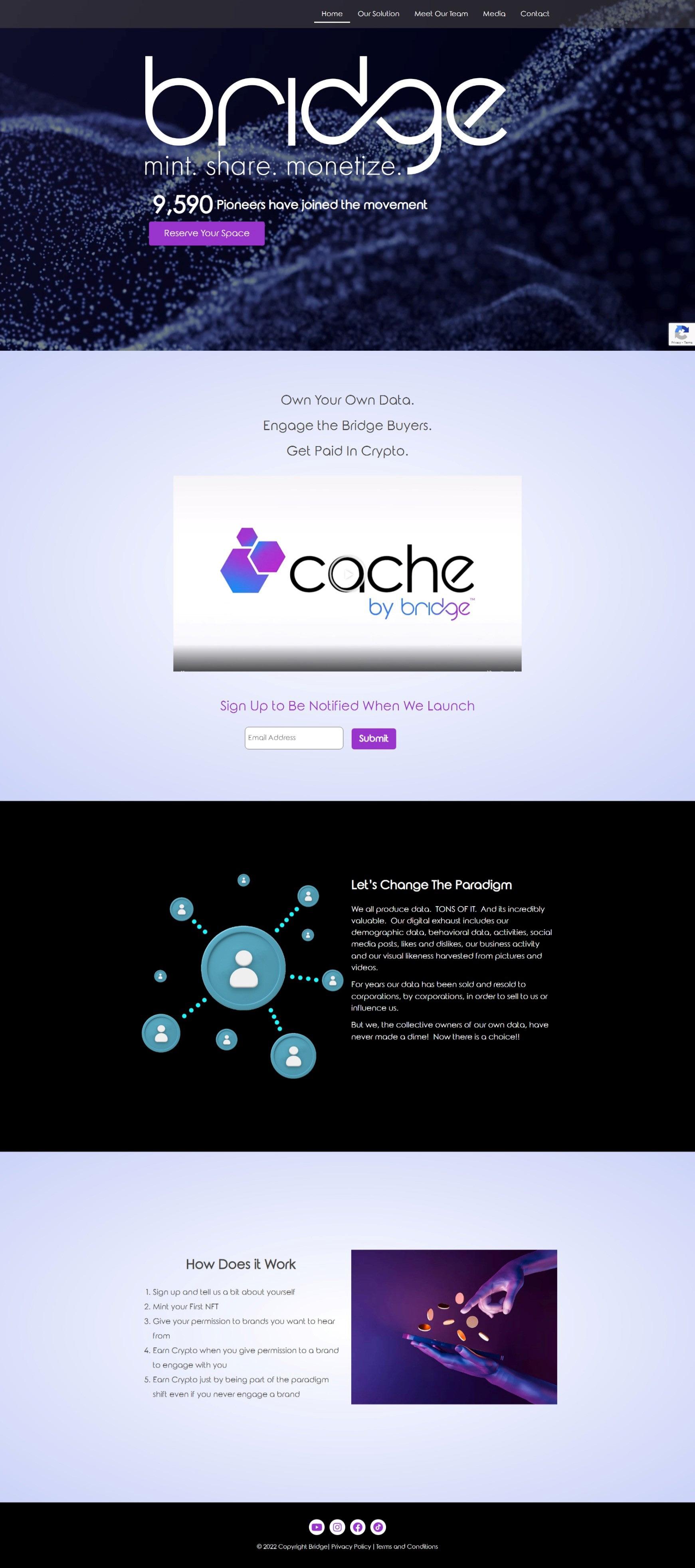
The scope of this product is enormous, and the global impact is huge. There's zero cost to the consumer. And everything we built is 100% consumer centric and we're getting as much money as we possibly can for them and have their best interest at heart The more people that use it, the more robust the ecosystem becomes.
There's also a significant environmental impact by blockchain technologies as the computing power uses a lot of power. To offset that, we're going to plant trees for these NFT's that will give us somewhat of a carbon offset and give back a little bit to the environment.
What kind of proprietary IP does Bridge have in place?
We have IP protection in place that uses Web3 and blockchain protocols, and we'll probably have additional patents filed as time goes on. The way we do this is proprietary, using
again, web three and blockchain protocols. The NFT is just a reference point for the data within the wallet so lets the computers know where to look for the data. The crypto becomes involved for compensation.
When you set up a cash NFT on our platform it’s super verified, unlike a social media platform like Facebook which is easy to set up fake profiles. We know who these people are, and it’s not only the freshest data possible but we can assure the data buyers that these are the actual people in order to mitigate some of the pitfalls that current social media has regarding data
integrity. We have ways to verify the person and make sure it's the right person.
Do you think some people would create different profiles in the metaverse so they can collect additional revenue?
There's two ways that we mitigate this situation. First the verification process, if they just throw their information into any data bar, the value of their data will become deflationary. We get feedback from data buyers, and we have an algorithm to determine who has the higher value and who has the lower value. We could in real time to monitor what wallets are doing something that looks nefarious or underhanded. There's always that 1% chance someone slips by the process but we have a very specific security protocol process for signing up for your first NFT. You can also add data to your profile to increase your data value. Also, a higher end product with a longer lifetime value for the company would pay a higher premium for your information, such as a bank looking for the consumer to open a new account.
The scope of this product is enormous, and the global impact is huge. There's zero cost to the consumer. And everything we built is 100% consumer centric and we're getting as much money as we possibly can for them and have their best interest at heart. The more people that use it, the more robust the ecosystem becomes. The consumer gets the lion's share, we get a piece of it, and then another piece will go back to the blockchain itself. Theoretically, just creating your NFT and never selling your data, you can make money from it. Over time, if you're just a member on the blockchain, money will just be added to your account as more and more people use it. We want to build a community around this. The social media platforms and data aggregators have their own community, and no one has a consumer side community which is what we're creating. This is happening already all I'm trying to do is get them a little piece of it.
We're looking at early March to have a full product launch that's out of beta which will be our alpha version and available in Apple Store and Google Play Store.

Robert “Bob” Zangrillo, Founder, Chairman and CEO of Dragon Global, a private investment firm focused on venture capital in tech and real estate investments. Zangrillo has managed investments exceeding $1 billion in companies that now have over $500 billion of market value and focuses on “developing Live, Work, Play and Learn communities focused on innovation, art, technology, experience, health and wellness and sustainability.” One of his missions is to evolve humanity and the world by leveraging artificial intelligence and he also looks at companies that specialize in clean technology, cybersecurity, data, ecommerce, the metaverse, mobility, and social networking sectors, amongst others. He has been an early investor in over fifteen high profile companies including DiDi, Digital Turbine, Twitter, Uber Technologies, Zynga and Facebook/Meta. We had a chance to sit down with the businessman to learn more about his philanthropic endeavors, what he attributes his success to, and his selection process for spotting potential unicorn investment opportunities.
By Hillary Latos Photographer: Richard GuatyIW: Tell us more about Dragon Global.
RZ: My firm Dragon Global is on a mission to leverage artificial intelligence and the Dragon community to evolve humanity and the world. We leverage artificial intelligence across all our investments. We are a co-GP and direct technology investor in innovative early-stage and late-stage tech funds and companies. Our goal is to identify the next trillion-dollar companies. When we look at early-stage investments, we are typically focused on companies we believe can become $10 billion enterprises. My background has been in the capacity of chairman, Chief Executive Officer, board member or advisor to over 15 Unicorn investments including an early stage investor in companies such as Facebook/Meta,
Twitter and other tech companies that have achieved market caps in excess of $40 billion and a trillion dollars. I have been doing this by making targeted investments and coinvesting with the best investors in the world by focusing on companies led by superhumans.
IW: What are some of your biggest success stories?
RZ: I would say the biggest success stories are on the technology side. From the mid-90s through 2000, I was founder, chairman and CEO of a company called InterWorld that built a high-end eCommerce application software that we licensed on a global basis to the some of the largest e commerce players in the world. Our customers were large retailers
such as Nike, Warner Co, Guess, Marks and Spencer. We also provided the eCommerce software for FedEx or NTT in Japan to host their own eCommerce solutions for their clients. I founded that company with two other friends and within five years this was a $3 billion publicly traded company that was Web 1.0. The second biggest success story was in 2008 when I invested in Facebook when they only had $180 million of revenue, and I became one of the larger early investors before the late-stage venture guys got involved. This year Facebook’s market cap is $290 billion and at one point was over a trillion.
In 2012, I could see Miami becoming a global technology city and a leader in innovation. I assembled land in the most
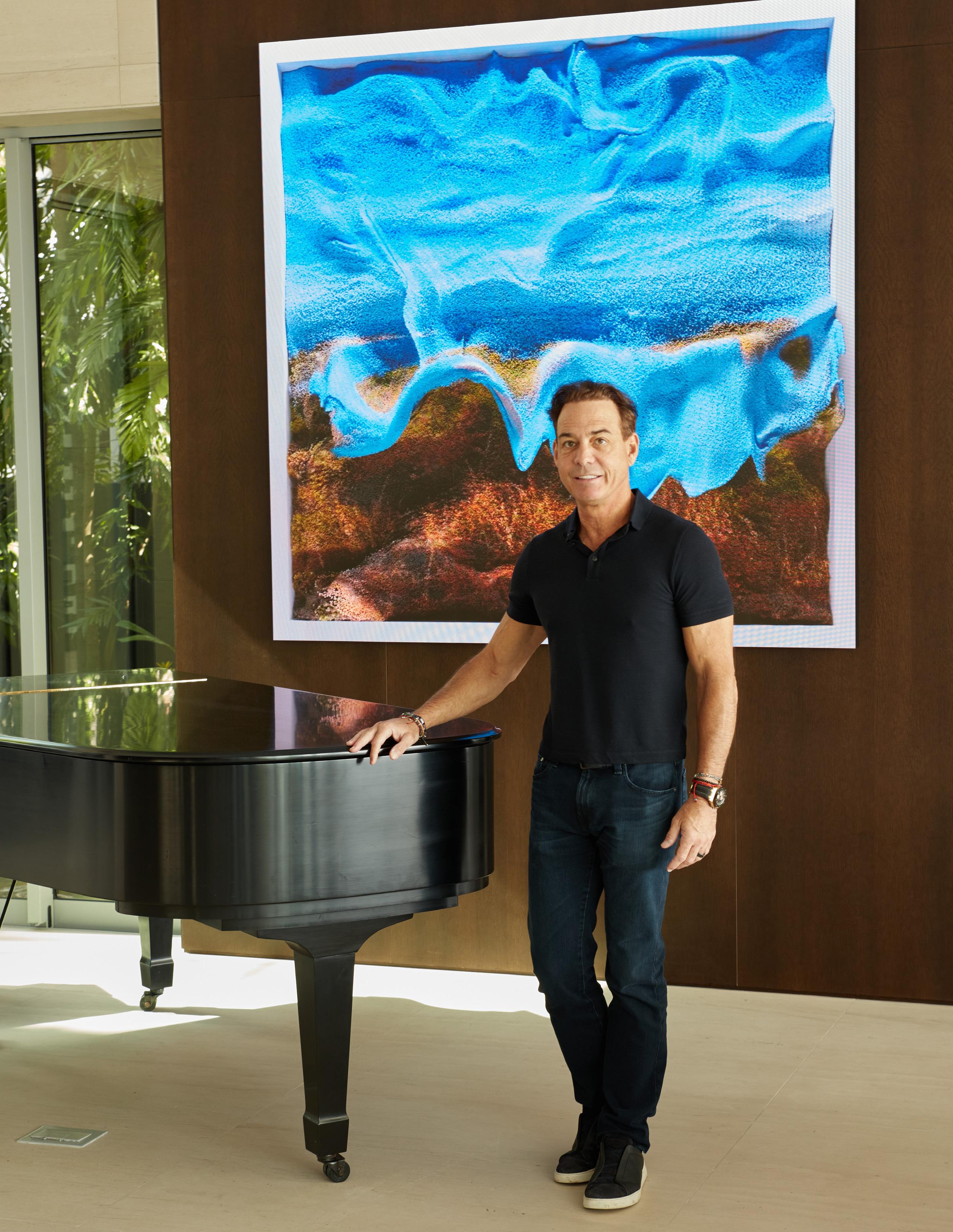
strategic areas of the city and teamed with local partners to entitle and we are developing over 10 million square feet of mixed-use properties in Wynwood, Little Haiti’s Magic City Innovation District.
IW: What are your thoughts on investing in cryptocurrencies or NFTs?
RZ: I am not a big crypto investor, but I am a big collector of NFTs. The reason why I'm not a big crypto investor yet is because I'm concerned about regulatory issues that can affect these companies and it is unchartered waters with future headwinds. But I am passionate and very knowledgeable about it, and I am very familiar with Etherium and Bitcoin, and web 3.0 companies and platforms. It will be a huge opportunity that is similar to Microsoft with the Windows platform and Google with their Android system, to really control the desktops and the platforms for other people to build technology. I feel much safer in cloud computing with Amazon and Microsoft, than I do in crypto.
For NFTs, I collect Teamlab out of Tokyo, and Refik Anadole, which I think are the two of the premier NFT artists in the world. I like being involved with some of the most creative minds on the planet and I have a lot of friends that are big art collectors, I collect what I think is the best and I'm constantly searching that out.
IW: Tell us about some of the philanthropic projects you're involved with
RZ: Through the Zangrillo Family Foundation, one project we donated $100,000 to went towards building a tech lab in the Church of Notre Dame in Little Haiti. We partnered with Microsoft to enable all the teenagers in Miami regardless of race or religion to have free access to technology, coding and literacy classes, along with mentorship programs outside of the lab. The second project is our Global Empowerment backpacks which includes books that all the successful entrepreneurs have used to build their companies as well as art supplies for those wishing to pursue creative fields and we also have a mentorship program. These kids would not only get the books and knowledge from reading, or art supplies but are also taught about sustainability. They can log on to a mentorship program and connect with
entrepreneurs, food experts that also discuss mental health and overall health and wellness.
IW: What do you see as the most interesting sectors to invest in?
RZ: We love real estate in Miami. This is going to continue for the next 10-15 years and will be a core part of our strategy. We also took one of our portfolio companies public, Selina which has 160 hotels in 25 different countries focused on the digital nomad or the remote worker. We see a trend where the new millennials will focus more on experience than they do on materialistic items. They get more pleasure out of going surfing while they're working remotely than they do out of buying a particular brand of clothes. Our core real estate is in Miami, and we are investing in best of breed technology managers or venture capital firms. We are also building out Dragon.

ai, a unique, innovative artificial intelligence company to enhance investor returns, empower our portfolio companies, provide our co-investment partners with valuable insights, and provide strategic advice to our strategic LPs, identify the next Amazon or Apple and we will invest in the growth capital stage or large investments in the public space.
In real estate we have a half million square foot project on the Miami River, which would be a combination of luxury apartments and office space with dock space and restaurants on the Miami River. I’m also working with Related on a big project in Wynwood, which is almost complete. The Magic City innovation district is zoned for eight 25 story, residential apartment buildings and six 20 story office buildings. It will have an entire 1000-foot promenade with interactive lighting on four and a half acres of public
space and over a half a million square feet of retail. So those are my big projects.
IW: Tell us about your art collection, how do you select which artists to collect?
RZ: I really look for things that I like and feel a connection to, and I look at things that would look great in my home. Unlike a lot of art collectors, I don't do it for the money, I do it for the passion. I don't buy pieces just to make money, I buy pieces to put my home. I spent three times what somebody normally would on my home and the construction and design, is in fact art itself. Highlighting the walls, the koi ponds or the experience inside the house is a reflection of the individual who owns the house.

IW: Do you have any other alternative investments that you're passionate about?
RZ: In my innovation category, I like climate and some of the energy technologies such hydrogen power and clean technology. There are also some areas where our mission is to leverage artificial intelligence in our community to evolve humanity and the world. If we don't save our planet, it's not going to matter. My girlfriend, Daniela Armijos is from Ecuador. She is very passionate about saving the indigenous people in the Amazon. We traveled to the Amazon to live with the Siekopi tribe. It is important to protect the Amazon, not only because it's the lungs of the planet, but there are enormous benefits from the plant species that we get out of the Amazon.
One of my real passions is in bioscience and biohacking, such as life extension longevity, achieving the longevity escape velocity, which basically to halt biological aging, and epigenetic reprogramming, which is the reversal of aging, and the ability to go backwards in age. Whether it’s using a NovoThor bed for infrared light, cold plunging, or using a PMF technology, there's a whole host of things I do to either halt or reverse aging.
I don’t invest in this area currently, but I will back other entrepreneurs or venture capitalists that invest in those areas because I do believe in the economic benefit of extending the productivity of humans.
Those of us that pay personal and/or business tax in the United States know how far-reaching Uncle Sam can be. As a result, I have always been interested in different sections of the tax code that may offer some potential relief.
By Mike Packman Founder & CEO | Keystone National Properties | knpre.com
This can be especially beneficial if you own a home on a large parcel of land. You can retain your normal rights on the portion of land that your house sits on, while donating the easement on the adjoining parcel. This would allow for you and your family to enjoy certain activities such as hiking, riding horses and enjoying the natural beauty of the land, while potentially making significant tax savings. This is often beneficial in estate planning, as it may help you pass on your land to the next generation at a substantially reduced valuation. (IRS Section 170H)
The IRS offers deferral of capital gains taxes when the proceeds from the sale of an investment property is “exchanged” for a like kind property of equal or lesser value within specific time limits. Commonly referred to as a 1031 exchange, this strategy can be used to defer capital gains tax until a later date in the future, and there is no limit to the number of exchanges an individual can complete. (IRS Section 1031)
Another investment strategy to consider when seeking to offset capital gains taxes are Opportunity Zones. When the U.S. Congress passed the Tax Cuts and Jobs Act in December of 2017, a new section of the Tax Code was created which resulted in the creation of Opportunity Zones across the United States.
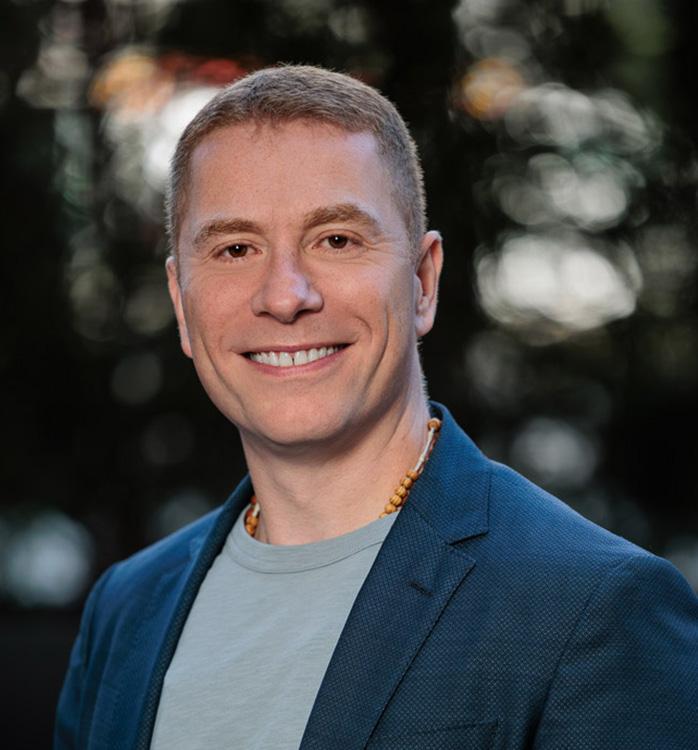
Understanding the sections that allow
tax breaks
doing good in the world is especially intriguing to us as it is aligned with our core philosophy of Doing Well by Doing Good.
There are multiple ways to donate land and receive tax benefits. One way is when a landowner makes a complete donation of land to a qualified organization. That donation may be claimed as a charitable income tax deduction based on the property’s fair market value for up to 30% of the taxpayer’s adjusted gross income (AGI). AGI includes all types of income, from earned to passive to capital gains. Another program that also helps the environment, is a lesser-known strategy for creating conservation easements. A conservation easement is a voluntary, legal agreement that permanently limits uses of land to safeguard its conservation values and protect the land for future generations. All conservation easements must provide public benefits, such as water quality, farm and ranch land preservation, scenic views, wildlife habitat, outdoor recreation, education, and/or historic preservation. A conservation easement donation can result in significant tax benefits if it meets the requirements of federal law. There are three main advantages of conservation easements.
1. May qualify to deduct up to 50% of your adjusted gross income.
2. Can carry it forward for up to 15 years, as opposed to 5 years with a simple land donation; and
3. Still owns the land and can enjoy it in its natural state for as long as they own it.
An Opportunity Zone is a community that has been designated by the state and certified by the IRS to stimulate economic activity in certain selected areas across the country. Roughly 8,700 areas in all 50 states have been designated. Opportunity Zone investments allow investors to defer capital gains taxes until 2026. After that date, their tax liability on the original capital gains event will be due, however, if the investment in the fund was made prior to December 31, 2021, the amount is reduced by 10 percent. The biggest advantage is that if the investment is held in an Opportunity Zone Fund for 10 years or more, there is the potential to not owe federal taxes on profits earned in the Fund.
If you dig deep enough, the U.S. tax code does offer opportunities to reduce both income and capital gains taxes. It is important to consult your accountant and other advisors to fully understand the impact to your unique situation and determine if any of these sections of the tax code may be beneficial to you. Understanding how to offset some of your tax liability can potentially provide you with additional funds to deploy to further your business and philanthropic goals – a winning combination.
Keystone National Properties is a real estate and private equity firm specializing in the sponsorship of tax-advantaged and impact investment opportunities for accredited investors and Family Offices. Keystone National Properties (including its subsidiaries and affiliates) does not provide tax, legal, or accounting advice. This material has been prepared for informational purposes only, and is not intended to provide, and should not be relied on for, tax, legal, or accounting advice. You should consult your own tax, legal, and accounting advisors before engaging in any transaction.
Hailing from a small town in Pennsylvania, Nancy Zeckendorf’s sheer will, and determination led her to NYC where she became one of the principal dancers of the Metropolitan Opera. From there she met and married the love of her life, William Zeckendorf, one of New York’s most prominent real estate families. Her latest memoir, “Small Town, Big Dreams” reads like a classic Audrey Hepburn biopic fairytale that inspires and captivates the reader. She details her fascinating career as a dancer along with the legends she has met along the way and provides an intimate look at her life after dance as a wife, philanthropist, real estate developer and fund raiser. Here Nancy imparts the valuable life lessons she’s learned, advice for a successful marriage, and how dance has imbued her life on and off the stage.
Tell us about your journey from a smalltown girl to the Metropolitan Opera Ballet?
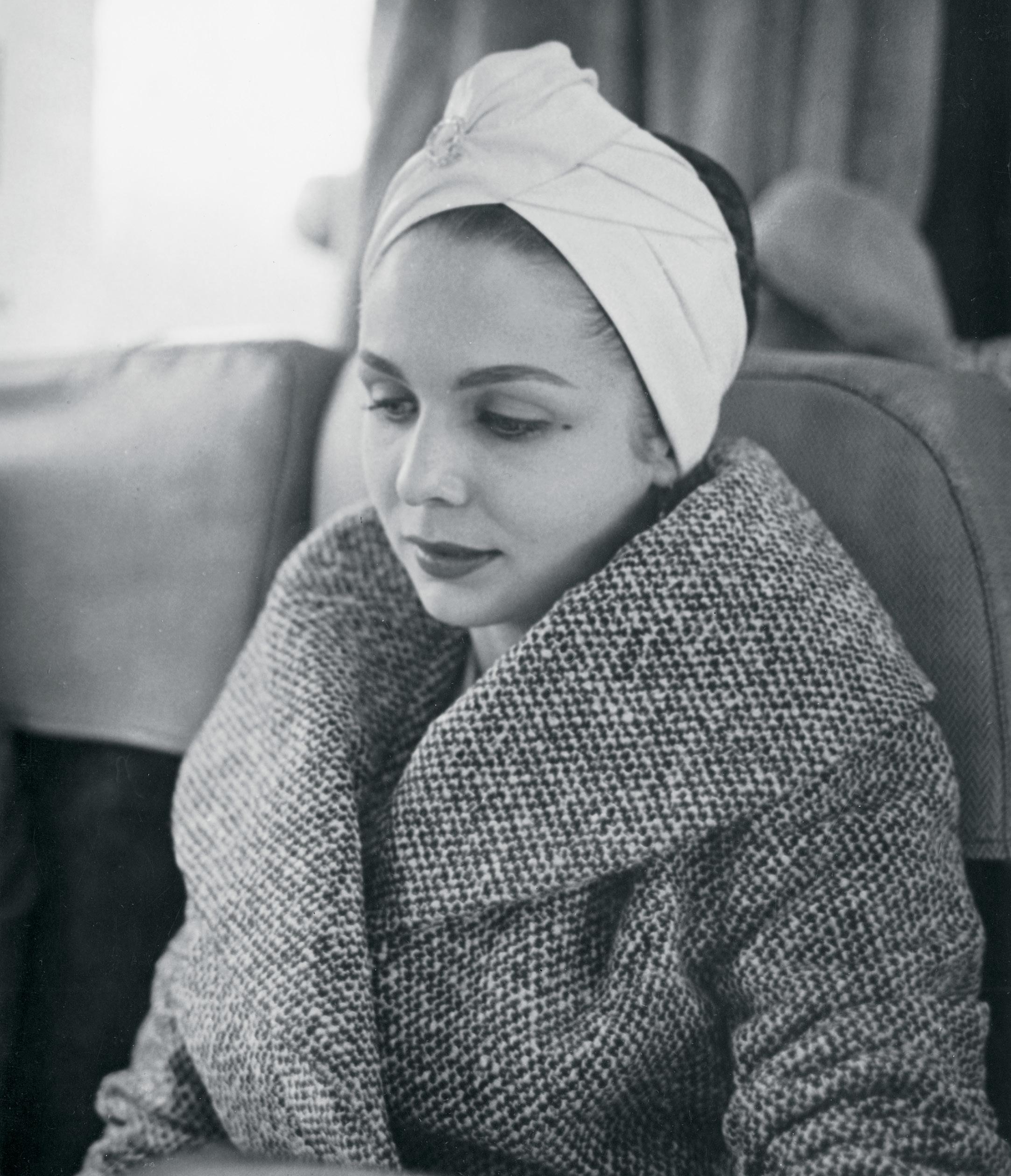
NZ: I came from a very small town of 1,000 people, but I knew the minute I was born, I was going to get out of there. My mother brought me a little record player, and I fell in love with music, and started to dance. We spent our winters St. Petersburg, Florida, to get out of the cold of Pennsylvania where I started my dance lessons. Back in Pennsylvania the closest ballet school was in a nearby town and the mailman drove would drive me up there every Saturday morning and back at night for 25 cents for the round trip. I had to collect nightcrawlers to pay the fare. And that's how I got my first ballet lessons. From there I met some mentors who helped me get out of this small town in Pennsylvania to New York City, where I was given two weeks to prove to my parents, I could probably make it as a dancer.
But when I got to New York City, and auditioned I was told that I was a pre beginner and needed three lessons a week with no point work. I was very lucky because I then got into Juilliard and had my picture on the cover of Colliers which proved to my parents more than anything else that I was probably going to make it. After Juilliard, I auditioned for a Broadway show, my first show and was made the understudy to the lead, though it was only around for three months. Following that, I got into the Metropolitan Opera Ballet Company, which was a divine place to be for nine years. And every year the entire
company went on tour across the country by train, with lots of wonderful parties, and entertainment. After the Metropolitan Opera I well, I also was in dancing in the Santa Fe Opera, where Igor Stravinsky was conducting his opera that we were in. I met my husband’s mother in Santa Fe where she was in the audience as her husband was a music critic. When I returned to New York, she introduced me to her son, Bill Zeckendorf.
That was the beginning of a new life. I stopped dancing because my husband said wanted me to be with him at night. I started raising money for the American Ballet Theatre before there were fundraisers. I was doing this just as a volunteer. I chaired 19 galas for them and raised money for them for 15 years. I seem to have a talent for seating the right people together as well.
NZ: I've been a fundraiser since I was a little girl, I brought home the most money from Girl Scout Cookie Drives, raised money
for the March of Dimes and had the most subscription sales from the high school. I guess it was in my blood. After I left the opera, we moved to Santa Fe where my husband was building a townhouse project. I was the project manager for about two years and came to love construction and architecture. I later joined the board of the Santa Fe Opera and became President of the opera and Chairman and launched a campaign to raise $21 million for our new opera house here.
My husband put together a deal to acquire a theater downtown, which he and I have turned into a Performing Arts Center, because there wasn’t one previously. I raised $9 million for the construction of the theater, which has become very successful and loved by the community.
What are some of the biggest life lessons you've learned along the way?
NZ: The fact that I was brought up Catholic in a conservative small town gave me a lot of determination and
ambition to succeed. Be the best. It's part of my personality, I'm an Aries.
One thing I learned about life is that having a really great marriage is when you stop expecting things from each other. Then you have a really good relationship, and I was married for 50 years to my husband before he died.
There was a very famous ballerina, Vera Zarina who was married to George Balanchine. She was in NYC when I was dancing in the opera and was my very best friend. Joan Fontaine was another friend that I met in New York. Being in the opera, we got to meet a lot of wonderful people. The founder of the Santa Fe Opera was John Crosby, and supposedly a very difficult person to work with. But I enjoyed my work with him more than anything else, I learned so much. I also have a lot of conductor and composer friends including Francesca Zambello, who was an

opera director who just left Glimmerglass, and of course all of my ballet teachers.
When you first met your husband, did you realize that he was the love of your life?
No. When I first met him, he thought I was like a nun, his mother told him to call me because they had tickets for the Bolshoi when they came to New York. She also didn't like some of his other girlfriends. It wasn't instant, but I really cared a lot about him, and I thought he needed me.
Doesn't every woman feel that about the man she married? It took him a while to decide, so I went on a vacation to let him think about it for a while. He came back, made up his mind, then we got married. And the rest is history.
Was it a natural progression to go into real estate and design?
NZ: This had something to do with living and working in the ballet Studios, which were very spacious. I really love architecture and I'm happier when I have plans in my hand. I.M. Pei, the iconic architect, was a great family friend and was a big influence on me too. Because we moved into an apartment that I.M. Pei
had created for Bill's father, and it was the first contemporary apartment that I had lived in which changed my life. When my husband bought the Delmonico Hotel, they were turning it into rental apartments in the 70s and I took all the furniture that was left over from the hotel, and I furnished 27 apartments with the leftover furniture and just bought new rugs. I like putting things together and making things work, but I'm not a designer. I love construction, it's all about line, design and space which is similar to dance.
When you look back at your life is there anything you would’ve done differently?
NZ: I have had a wonderful life with opportunities to do so many things and work with so many exciting people. Being in the Metropolitan Opera, the Santa Fe Opera, the American Ballet Theatre, with Baryshnikov and having great friends who were former ballerinas I had a very blessed life. The most important thing in my life was getting out of the small town I grew up in. I was lucky to do it because of these people who took me under their wing. He was a psychiatrist. She was an artist. They helped me have the courage to tell my family that I really had to do this and not go to college.
Luckily, Juilliard was offering a Bachelor of Science degree with a major in dance.
I'm just very fortunate that I got to do what I never thought or believed that I would ever get to do. When I was a little girl that somebody told me, I'm going to be in the Metropolitan Opera, with Risa Stevens, I'm listening to her recording on my little record player. I could never have believed that. That was a miracle. I also started dancing so late and the training was very mediocre. When I was in New York, I was 17 and was really a beginner. Now the dancers who are 17 are probably doing principal roles in a ballet company. Having started so late, I was really lucky that I got to do what I did.
How do you think ballet is different today than when you started?
NZ: In dance, the technique has gone beyond what anybody would have done 30 years ago and they couldn't touch what's going on today. I think in some ways athleticism has taken over in some respects. Now the emphasis is on contemporary dance, because a lot of the companies that do classical works think the public is more interested in seeing contemporary dance,

which doesn't make me thrilled. I still like classical ballet such as Swan Lake, Sleeping Beauty and Nutcracker, because that's what I grew up with. For a long time, we had a lot of wonderful Russian dancers here which we don't have any more. But everything changes, a lot of people who are directing operas today like to take a new look at it, set it in a different realm, and sometimes it's very successful and sometimes it is not.
Grand opera is supposed to be full of wonderful, exciting scenery and costumes.But I think a lot of contemporary directors prefer to do something that's a little less exuberant in its production. A lot of dance has been cut, which makes me sad. The thing that makes me really sad is we had 40 dancers when I was in the Metropolitan Opera for nine years and now they don't have any permanent
dancers, they just have an audition whenever something comes up. When we were there, they were doing grand Verdi operas with lots of big ballet scenes and we got to dance and perform a lot, which was terrific. It was incredible being onstage with Maria Callas. Being on the stage in the Metropolitan Opera doesn't matter whether you're doing a solo, or whether you're just standing in the back being a priestess or a prostitute. It is very meaningful and was special to have been in that company at that time.
Are there any principles that you've learned in ballet that you've applied to your life?
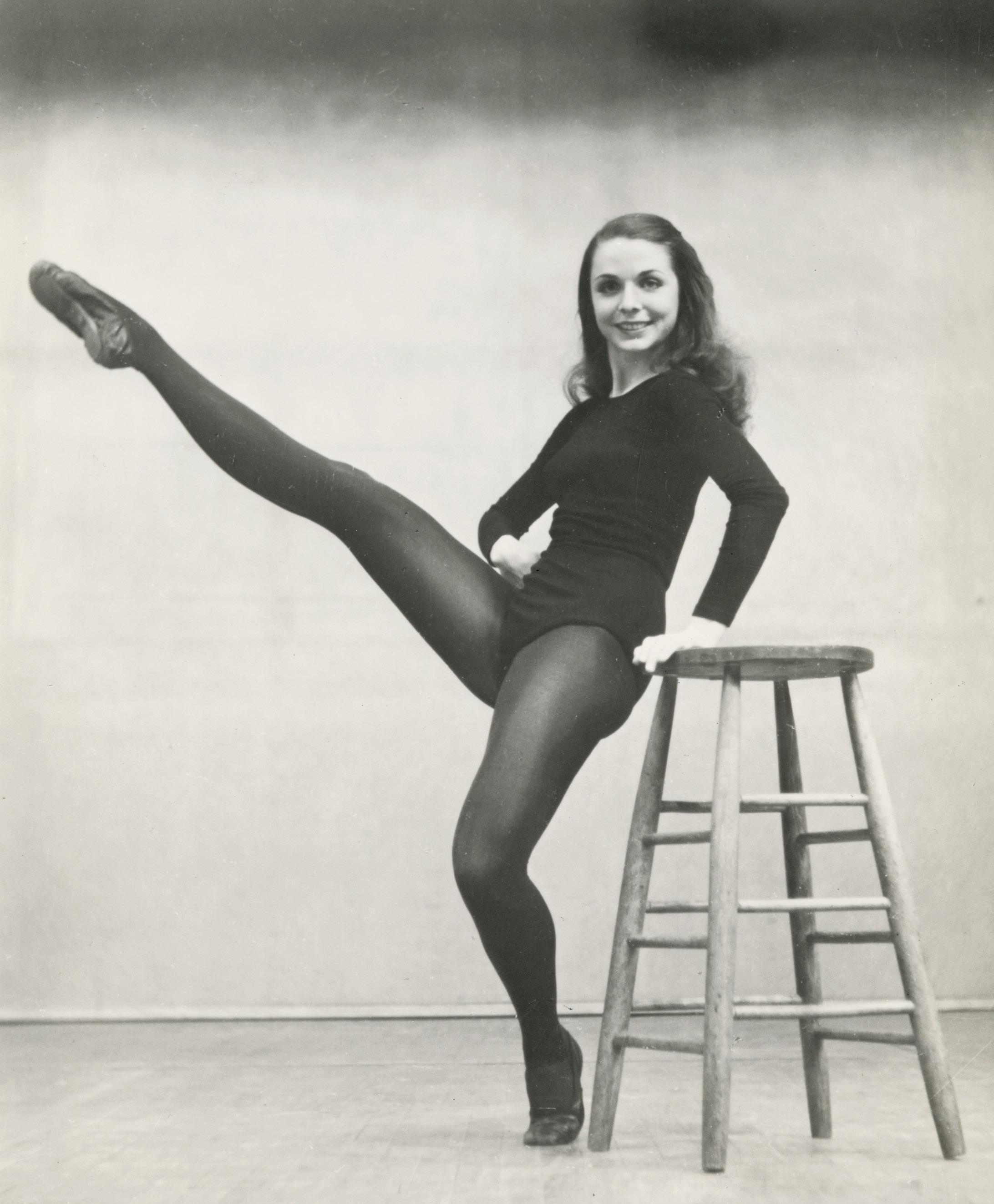
NZ: Discipline, discipline, discipline. I learned a very good lesson from somebody who was Martha Graham's early mentor. He was not
a dancer but a musician. He was teaching at Julliard and composed some scores for her. We became friends and he was a much older gentleman. One day he took me to dinner, and he told me the problem between Martha Graham and him, was that two toothbrushes can’t stay on the same counter. Don't push over. Don't make waves. My husband had been married before, but luckily; I didn't have to encroach upon his space. But it's more than just space, and this was a very interesting lesson to me.
When you take a ballet class everything else goes out of your mind. It's like doing yoga or meditating. You put your arm on the bar, the music starts, and you do what you have. It's automatic. It's very therapeutic. It’s the same thing when you go on stage, you can't think about anything else. It just becomes part of you. But you must learn in order for it to become automatic.
If there was anyone that could play you in a memoir of your life, who would it be?
NZ: A long time ago everybody thought I looked like Audrey Hepburn, and she studied dance. If we could go back in time, that would be my choice.
The most important thing in my life was getting out of the small town I grew up in. I was lucky to do it because of these people who took me under their wing. He was a psychiatrist. She was an artist. They helped me have the courage to tell my family that I really had to do this and not go to college.
Moments of discovery are so fascinating because you are suddenly caught up in something unexpected: over the course of a career here a few names and artists discovered beginning in the mid 70s till today. My art sleuthing has led me to such artists as Jackie Ferrara, Robert Longo, Cindy Sherman , Franz Erhard Walther, Ulay/ Marina Abramovic and Damien Hirst . Today recent discoveries and rediscoveries Include these five women to follow: Katherine Porter, Max Cole, Maureen Dougherty , Sally Davies and Tracey Snelling. Three were already found by me and collected for the Microsoft Art Collection that I curated in the early 2000s.
By Michael KleinWhile researching the history of the Terry Dintenfass Gallery for the exhibition, The Women Who Made Modern Art Modern, an exhibition I organized back in 2016, I was introduced to the work of the painter Philip Evergood. Perhaps re introduced to his work is a better way to explain this event, having been in the Whitney ISP program many years earlier I knew one of his classic paintings in the museum’s permanent collection, Lily and the Sparrows -1939, a work that always intrigued me because of its psychological intensity. This was painted in the fall of 1939 just as the war had erupted in Europe. She is a girl seemingly locked into her red brick world-a foretelling of the Anne Frank storywho watches as sparrows fly freely before her open window. Freedom is there just outside her window but now not reachable.
Likewise the painting, The Future Belongs to Them-1938/52, now in the collection of Terry’s son Andrew and his wife Ann, is quite remarkable in that it is a mature visual statement coming after the painter’s years studying abroad who is now building a life and career in New York. It is also one of Evergood’s largest canvases- a
masterpiece as both story and image. This is an honest and heartfelt representation of a woman holding onto a number of babies of different colors and races. She is the absolute representation of a tolerant world, a world in which all have opportunities to grow and thrive. She is mother and heroine both modest and proud. She is a beacon of hope in the world of 1938 — one year away from the outbreak of WW II and all that it destroyed. Evergood painted it in 1938 and then further embellished it in 1952 .
For many the question asked is simply, who is Philip Evergood? I had wanted to answer this in the form of an exhibition, and what follows instead is the beginning of an essay. And you ask why? He is a significant artist in the history of American art who has been sorely overlooked. His work connects to the political and social climate of today even though his works date back to the 30s- the years of the Great Depression. Yet we are now confronting some of the same issues as then: a political crisis in our government, the likes of which we have not seen before; economic imbalance, mass migrations caused by war, issues of race and inequality in our
society, and extreme weather events causing floods and droughts. By the time Evergood had finished his beautiful image, Mussolini had been in power since 1923, Hitler since 1933, and Franco of Spain the next year. War was to be everywhere which became a preoccupation of Evergood’s, exemplified by the intimate portrait of a badly wounded young boy who survived the siege of Stalingrad. The daily life of those on the battlefront and those surviving in cities across Europe are tied up in the portrait of a young Russian depicted in the 1943 painting, Boy from Stalingrad. Akin to Otto Dix’s portraits in graphic reality of wounded soldiers of WWI, Evergood presents to us not the heroes of battle but the victims of such violence. The battle for Stalingrad was a major event in Hitler’s plans to invade and conquer Russia. It ultimately failed but at the cost of thousands of lives.
Deep in the archives of WNYC radio, one will find a 1944 interview with the American artist Philip Evergood. ( Self Portrait in Straw Hat ) The interview is conducted by his long time friend and colleague, the painter Frank Kleinholz. Evergood was invited to
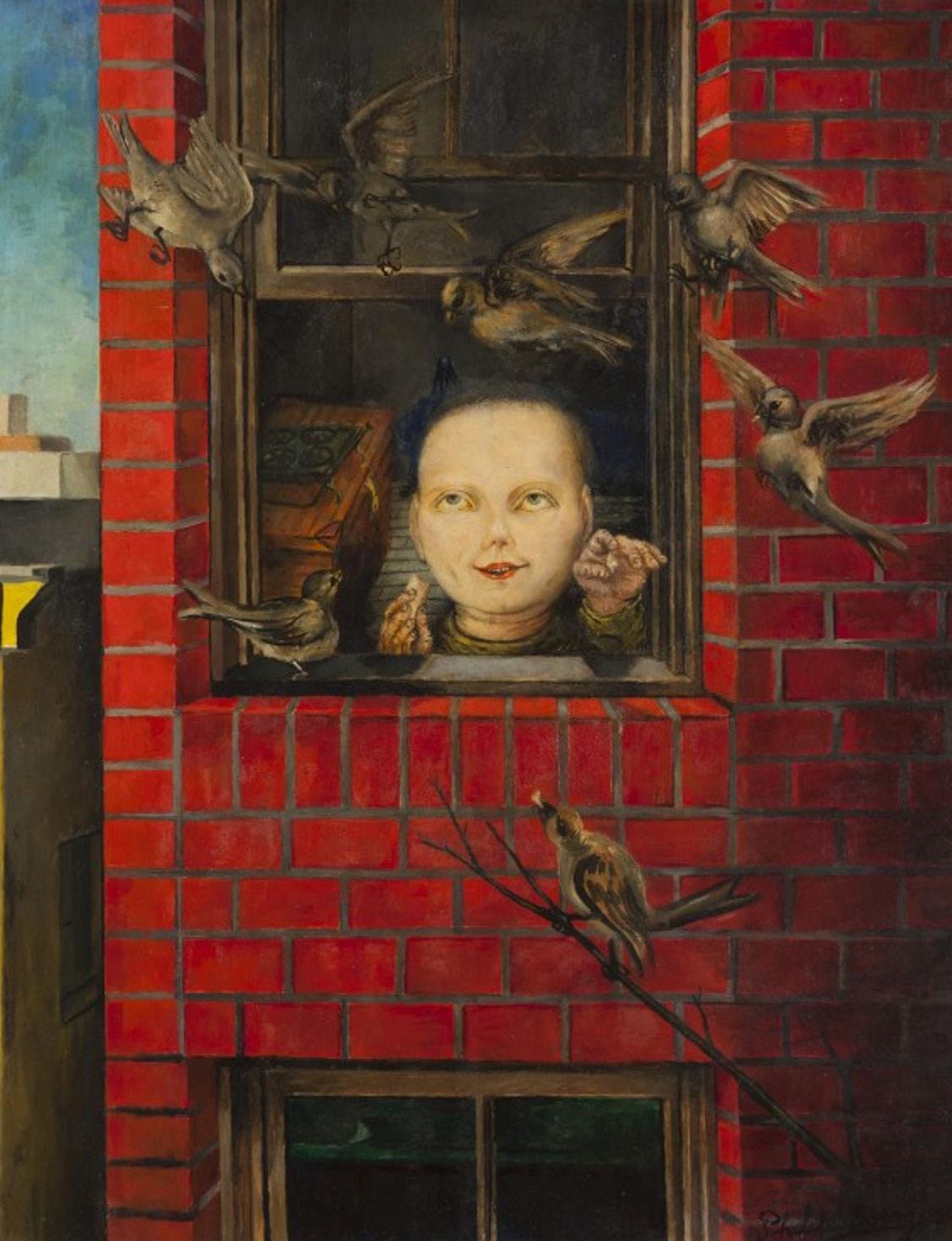
Waiting room, 1936
participate in a weekly radio program and was asked to define his philosophy when it came to painting. Evergood was quick to explain that he had just completed twelve images for the Russian War Relief Calendar, a calendar used to help raise funds for the victims of Russia’s battle against fascism. Evergood, very proud of his work and his contributions to the relief fund, was clear to explain that he saw himself in a long tradition of humanist painters, those artists who like Rembrandt or Brueghel represented aspects of the human condition. In fact six years earlier in 1938 he wrote that “great art lives because it has universal human appeal.”
For Evergood, the follies, foibles and actions of men and women were the focus of his life’s work. Contemporary life as represented in his paintings across some five decades was a statement about the values, concerns and actions of humanity. It was the story of people living in the 20th century.

And while other painters in this modern era as diverse as Philip Guston, Jacob Lawrence or Leon Golub have become recognized and championed for their social awareness, it is Evergood who represented these causes over the course of his life and in depth through paintings, works on paper and prints. ( Waiting Room,1936 ) And these causes,
whether it is freedom, liberty and equality that are, still today, of keen importance for our society. We witness the same struggles with the issues of social justice, economic equality and the security of our democratic system of government on the internet and in social media, and before the impact of technology was the impact of painting. 75 years ago in the war year of 1944 all three characteristics of a free and open society were under attack by the forces of fascist regimes as in many ways they are similarly under attack today in the form of racism, bigotry and economic disparity. I would argue that Evergood’s images from the past are extremely relevant today; though the painting
style we see is different, the images reflect today’s very complex and very conflicted social order. For example there is (Home, 1946 )
Lost amongst the many ongoing developments and overlapping movements of the post-war art generations, Evergood has been off the art world’s radar for many decades. With no heirs or foundation no one has been charged to keep his works in the public eye. In fact, his last solo show at the now closed Kennedy Galleries was in 1972. Yet this American born and English educated artist has much to tell us; to share with us and can stand as a model of social consciousness and an innovator in the visual arts.
His idiosyncratic if not peculiar style seems to be an amalgamation of an expressionist drive with some of the hard edge reality of Germanic painters like Dix and his contemporary Max Beckmann. Evergood’s figures are crude at times, beings twisted and bent by poverty, war and fate. He is a great chronicler of American society in the pre and post war eras; those living in the countryside ( The Lake ) or those living in the city.
( Sunnyside of the Street ) A Corcoran Gallery of Art prize winner that was then purchased by the former museum in 1950. In Artnews, the reviewer noted ,” a lively street scene by Evergood which is one of the outstanding

paintings in the show.” The street is a meeting place for kids, black kids who play stick ball, hopscotch, the street is the playground for the neighborhood. But in this neighborhood too lives a blind man, a child in a wheelchair and in the distance an ambulance arrives for a patient. This was typical of Evergood to present us with all aspects of daily life.
Children are his heroes; they live in an idealized world not yet affected by conflict. Families are his barometer of a happy life and an equally happy future. In spite of the horror, terror and calamity of war and economic hardships of his middle years, Evergood largely remained an optimist.
He had a taste for romantic things, symbols and images of a world made up of fancy and fantasy as much as of the ordinary day to day, borrowing from literature and history to describe and represent the present. Though he never served an avant-garde such as the younger generation of painters developing around him, nonetheless he saw himself as a significant maker of images and pictures whose virtues were the constant examination of human interests, desires and tales. (Boy Eating Pear) ; and the Smithsonian’s (A Woman at the Piano).
am a social painter,” Evergood remarked in an article of the same title in the Magazine
“I
Realism means being concerned with this world, expressing emotions common to all mankind. Realism to the artist, is the expression and interpretation of his experience.
Philip EvergoodDowager in a Wheelchair, 1952
of Art in 1943. Like his uptown New York contemporary, Alice Neel, much of Evergood's social painting was born from his domestic situation. His dancer wife, Julie, was partner, model and muse. Though the couple had no children of their own, children remain important characters in his work, representing youth, hope, fraternity and the future of society as suggested by the title of that early painting The Future Belongs to Them 1938/52.
An exhibition of his work right now would bring some fifty years of this truly American painter and commentator back into the light of a 21st century discourse. From his pictures of crowds, women, and children we see a painter who recognizes the power in the people; in the portrayal of an innocence and the noble character of the modern woman. There are images of crowds who are the players in the world’s drama. From social realist to imaginary realist, the figure was key to Evergood’s paintings and his figures could be elegant and reserved or crude and suggestive. Both represent the extreme of humanity, the heroes and the victims of war, strife, or difficult economic times; those who survive and those who falter. Has anything about these protagonists changed since Evergood put brush to canvas and began to exhibit his works?
“Philip Evergood,” wrote Alfredo Valante curator for his 1969 solo exhibition at the Gallery of Modern Art in New York, “has remained a proponent of sympathetic analytical views of people and their problems, a visionary interested in their dreams, theirs hopes, their tragedies.”
Evergood’s life ended suddenly in 1973. He died in a small fire in his home in Southbury, Connecticut. Fate had extinguished a long career that had led to a retrospective at the Whitney Museum of American Art in 1960 at the age of 59 with the support of many of the important collectors of his day including Joseph Hirshhorn who collected some 68 paintings and works on paper over a 30 year period. Nevertheless, Evergood gets short shrift now. When included in the 1991 Museum of Modern Art’s Art of the Forties, he is published between the pages of Ben Shahn and Jacob Lawrence and he is represented by a single print, hardly fitting for a painter who decades before garnered significant attention and awards.
Evergood is never billed as a modernist and he is pigeonholed as a Social Realist which casts him in the light of being Socialist, Communist or subversive. One might argue that the mercurial nature of his works, his deeply romantic position and his political ideals as a painter puts him ahead as an early Modernist in the tradition of Van Gogh or Gauguin more than the tradition of Rothko or Newman. He is painter, a poet of the people depicting strife as well as pleasure. His paintings are intimate, easel size, distinct vignettes. Over time he was more and more on his own far afield from the trends of Abstraction

Expressionism, or Pop Art and Minimalism.
He is an exile at home followed by a small but loyal crowd led by Herman Baron, founder of the ACA Galleries and longtime friend, and John Baur, former Director of the Whitney Museum who followed up on his 1960 catalogue for the artist and wrote a lengthy monograph on Evergood published in 1975 two years after the artist’s death. Baur summed up Evergood’s sensibilities this way, “He had to weep or laugh in life with the same intensity that he wept or laughed on canvas. And he had to translate the emotions
of life into the very different languages of art with the utmost intensity of feeling.” In 1966, critic Lucy Lippard wrote at length for a monograph focused on Evergood’s array of drawings, studies and prints. For Evergood his painting or drawing style was subject to need, desire and ultimately to the end product of his search for meaning through the invention of highly imaginative pictorial narratives that drew from sources close at hand including friends, families and colleagues. “The work of Picasso and his outstanding contemporaries Braque, Rouault, Matisse Chagall has substance and meaning no matter how experimental it may be,” says Evergood. Similarly, Evergood saw himself free to experiment to create the paintings that worked best for him.
Painting was a form of storytelling. In an unpublished essay of the 50s. Evergood said “Realism means being concerned with this world, expressing emotions common

to all mankind. Realism to the artist, is the expression and interpretation of his experience.” It is an examination into the moral and ethical character of men and women, young or old, black or white, at work and at play, at peace and at war. His was an encyclopedic overview, an examination of the human condition not as a judge but simply as an observer. His observations could be close and detailed or far and fanciful as if in a dream. These extremes that are now accepted as concepts today were not so much in his heyday. Look at painters such as Squeak Carnwath and Charles Garabedian and even the late works of Grace Hartigan; or others like Malcom Morley and Jonathan Borofsky—figurative invention is their way to find meaning.
Over the years other writers, critics and artists have expressed their support too: Manny Farber, Fairfield Porter even Jack Tworkov, a leading member of the Abstract Expressionist
group, painters whose aesthetic was in direct opposition to Evergood’s humanist beliefs. As a painter in his own right, Porter’s profile in Artnews in January1952 he describes
Evergood’s techniques and materials in detail, focusing on the mechanics of getting the image on the canvas having studied the subject. The final painting,Girl and Sunflowers, is a classic Evergood which depicts a young girl surrounded by giant sunflowers making numerous charcoal drawings,. We see the creation of a romanticized landscape where youth is secured and surrounded by natural beauty.
In the hands of art historians, critics and curators who understand that the history of art is not a static history but a dynamic one which needs constant attention, the past is reexamined and its relevance to the present made clear. Evergood deserves a place at the top of the list.

Canadian artist Erin McGean began her career as a trained illustrator and painter and has transformed her art form into creating analog and digital collages. Over the past several years she has exhibited her art at galleries, sold her artworks to private and corporate collectors, and has had work commissioned by magazines like Elle Canada to name a few.
By Mosaka WilliamsonMcGean has described her love of deconstructing images to create something entirely new as her “current ongoing visual obsession”. She studied painting, drawing, and art history at York University in Toronto earning an Honors B.F.A., followed by a B.Ed. from Brock University. She currently resides in Oakville, Ontario where she continues to hone her craft and use conventional collage techniques in combination with digital technology to repurpose found imagery. McGean’s work has evolved as she has evolved and her work can be described as avant-garde, experimental, and innovative, and was greatly impacted by Instagram and social media. Impact Wealth had a chance to sit down with her to learn more about her and her artistic vision.
Impact Wealth: Please tell us how you got started in collage work and about your inspiration.
Erin McGean: I've always been an artist, I studied painting and drawing as a student back in university. I painted for a long time, and I had some success as a painter, then I had children and I stopped doing art for several years. Then Instagram happened and I began to see all these people post photos, photos that they had put filters on, and something changed. The photos were a little bit altered and it inspired me to start doing that with pictures of my young children. I began experimenting with a lot of different apps, smartphones were relatively new at the time, and all of a sudden, I was introduced to this world of greater capabilities.
The art I saw on Instagram was inspiring me and it felt like an accessible way for me to create art because I didn't need to set up my studio and paint tools, it was a whole new process of creating things. The process of making something on your phone with photos that you have, or photos you can obtain, became an easy and accessible way for me to begin creating art again. I joined Instagram very early on; at that time it was a really small community. Instagram was an intimate and somewhat of an artist community. I was able to meet a lot of people both on the app and in real life, have fantastic experiences, and go to different types of events.
Eventually, I got bored with making art with my phone and sort of hit a wall. I realized I was missing the materials I had worked with all my professional life, however, being a painter is very tactile which is something I am not fond of. So, I started editing photos of my work into something that was more in the form of a collage, and this continued to evolve. You can see examples of this evolution on my Instagram stream, it's all there and visible from my 2011 posts up to today. I began by grabbing a few magazines I had around the house and that kicked everything off.
Now I am pretty obsessed with regular analog collage, cutting up old books and magazines and I am working towards developing digital collages. What I have discovered is that due to the popularity of the NFT (non-fungible token) space, traditional artists are digitizing their traditional art, so I started doing that. But for me, it wasn't enough to scan a still collage so my first NFTs included animated versions of my collages. I scan them and use different software and apps to add motion and sound. From my perspective, this is a bit more worthy of being in the NFT space. So that's kind of where I'm at now. I am selling still versions of my collages, and I am animating as well.
Impact Wealth: Where did you get your ideas for your juxtaposition? And how has it evolved?
Erin McGean: Since high school I have always used female figures in my art to symbolize myself, the figures often represent me and my feelings about the things in my life. When I look back at my paintings from high school there was always the presence of a

figure that was often in a somewhat lonely, dark, and rather melancholy space. The uncertainty and anxiety of those teen years coincide with how I was feeling when I was making art at the time. When I was having children, I noticed that I used a lot of plants and flowers that came out of these figures, which I guess kind of symbolized a more positive outlook I had in life. Perhaps I was embracing the fertility that I was feeling and my mothering and nurturing side.
I continue in a similar vein, but I am exploring some of the social expectations placed on women. The way we are depicted in my collages is from the use of very oldfashioned images. Part of the meaning that is inherent in my work is the pictures I have used, which I often don't even alter very much to get a sense of the original photo. I am exploring how women have been depicted in the past, you know as pinup models, and I am exploring ideas around the male gaze, and objectification of women.

Impact Wealth: Can you tell us more about your progress in the NFT space?
Erin McGean: I got into NFTs in 2021 and kind of stumbled into it through an artist community I was part of. I still sell physical pieces of my art and I still hold traditional exhibits, but now I'm selling my art through NF T's. I often try to pair my physical piece with the NFT so that when people buy the NFT they get a physical collage as well. Another exciting component I recently discovered through the NFT space is the use of augmented reality.
That has been the perfect kind of evolution for me because I have often made animated versions of my work. I have found applications where I can pair physical and digital art through a phone, you can hold your phone up to a still version and see the animated versions of the NFT. So, it has been a fun way to kind of bridge the traditional art and the NFT world.
Impact Wealth: For those people who aren't as familiar with the NFT financial structure, how does it benefit collectors and artists?
Erin McGean: That's a good question, for many artists it involves cutting out the middleman. We don't have to rely on galleries, or someone
The process of making something on your phone with photos that you have, or photos you can obtain, became an easy and accessible way for me to begin creating art again. I joined Instagram very early on; at that time it was a really small community. Instagram was an intimate and somewhat of an artist community.
to represent us and take a commission on our art, we are selling it directly to the collector. Another advantage is if the art resells in the future, we get a percentage of profits set by us. For example, Andy Warhol may have sold a print for $500 and today that same print sells for $5,000,000. He has never seen any of those profits. So if an artist continues in their career, and their work continues to increase in value, they will reap some of the rewards as the value of their previous work increases in value and trades hands.
Impact Wealth: Would the artist only get monetary compensation once it sells and trades hands?

Erin McGean: Yes, most artists will set a secondary market value at 10- 20%. So if someone resells it in a few years for
100 times the value, the artist will get 10-15% of the resale.
Impact Wealth: Is there ever a cap on the number of NFTs an art piece can have? How is that valued?
Erin McGean: You can compare it to an original and editions. An artist may make one NFT which is called minting (publishing a unique digital asset on a blockchain so that it can be bought, sold, and traded), they might have just one version, or they might have an addition of whatever number they want, which would reflect the value just like it does in real-world art.
Impact Wealth: How do you think artists are contributing to driving up the demand and prices of their NFTs?
Erin McGean: Part of this is done by continuing to work as a productive artist who knows that their work will grow in value because they are passionate about what they do. An NFT was meant to be more than just a JPEG file, for example, it could offer membership or come with other things. This is called unlockable content (or bonus content), this could be in the form of a studio visit, the right to the next drop that the artist releases, or perhaps you could have first dibs on collecting the artist’s work. You can attach other things to the NFT that would make it more dynamic.
Impact Wealth: There has been a lot of talk about NFTs and the Metaverse in the art world, are you involved in that as well?
Erin McGean: Yes, there are several different types of Metaverse worlds being built.
They are a good meeting place for people who cannot geographically come together. This makes art more accessible; you can hold an exhibit in the metaverse and invite people from all over the world. And you're there in 3D spaces just by looking from a screen on your computer.
You can also get VR goggles and feel like you are in there viewing the art with other people who are actually in the space with you so you can talk to them. The multiplayer metaverse is like a real-life exhibit, it is quite phenomenal.
Impact Wealth: Do you think that this will just change the future landscape for the way art is made and sold?

Erin McGean: I think it will, however, I do not think it will replace everything that exists now. But I think it will offer something different for artists, even when social media came about, that offered a new avenue for artists and that is how I started getting some success.
The ability to sell my art through Instagram and my website changed things. This could be seen as the next level of that. I also think it will affect education because as a teacher I can envision meeting other artists virtually from around the world. It is a chance to explore something new.
Impact Wealth: Which direction do you see your progression as an artist going?
Erin McGean: I want to stay true to my art and continue to make collages, however, the NFT space has opened up new possibilities and has altered my art a bit. I want to try to incorporate new technology into the meaning of the work in a way that makes sense.
Impact Wealth: Moving forward where do you see your source of inspiration? Do you see other mediums being incorporated into your work?
Erin McGean: Not yet, I am still quite tied to my old production. I think a lot of artists kind of lose sight of who they originally came in as, especially when money is involved.
Some artists shift their style to match what is popular in the space. I am trying to stay true to what I have been doing. I look at NFTs as just another way to get my art out into the world to get new collectors.
Impact Wealth: What are your plans for Art Basel, Miami?
Erin McGean: A lot of these things get planned last minute and I am involved in a lot of different communities within the space. One of them is super rare and is one of the premier platforms where the highestselling NFTs sell. I am also trying to build a community of collage artists within the
Some artists shift their style to match what is popular in the space. I am trying to stay true to what I have been doing. I look at NFTs as just another way to get my art out into the world to get new collectors.
NFT space to help elevate them, but also to help promote collages as a medium.
We have seen digital photography blow up within the last year because it is digitally native art. We are collage artists and painters and some of the traditional artists are struggling to find a way to promote or market their art to the NFT space, which is digitally focused. Working with a group of other collage artists, we're hoping to have an exhibit at Art Basel under a rare umbrella. And, I’ll probably have my work in a few exhibits in NFT NYC. I was in three or four different exhibits there, but they all happened at the very last minute.
Impact Wealth: Are there any artists who have inspired you to become an artist and a teacher?
Erin McGean: Growing up I was inspired by other female artists like Frida Kahlo, Georgia O'Keeffe, and Emily Carr, who you have probably never heard of. Emily Carr is a famous Canadian painter who was involved in the group of seven which I was inspired by. I admired how their work reflected their lives. As I got older, I began studying modern art and was moved by artists like Barbara Kruger. I also admire collage artists Hannah Höch, photographer Carol Walker, and the surrealism of visual artist Man Ray.
Impact Wealth: What projects are you working on for your next exhibition?
Erin McGean: I am pretty obsessed right now with making a series called “GIFs out of GIFs”. What I am doing is scanning several iterations of one collage, and then compiling them in Adobe and adding effects to create a moving version of the collage.
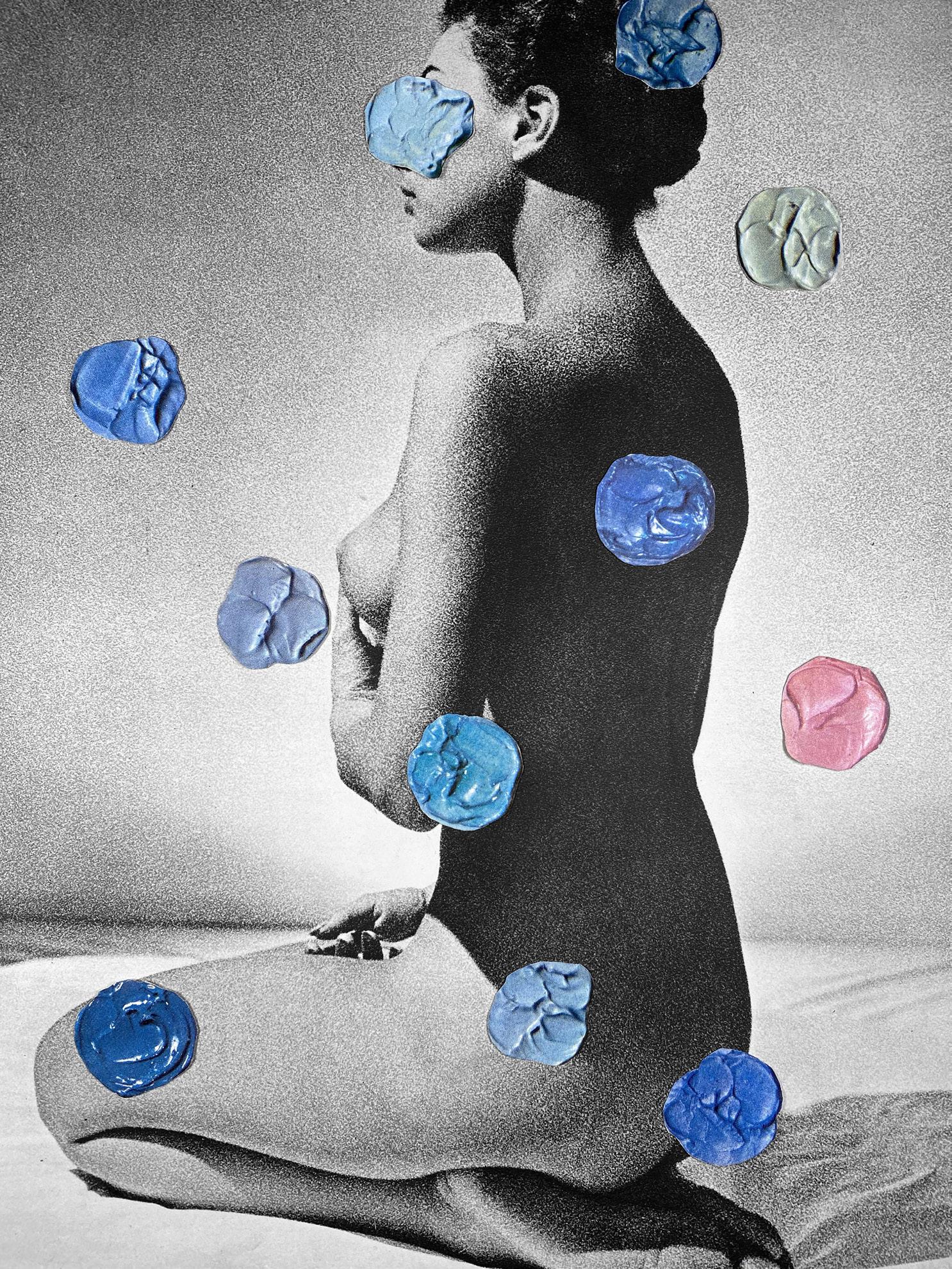
Impact Wealth: There are so many new mediums for artists and collectors. In a place like Art Basel with numerous fairs, how do you wade through all the noise and reach people?
Erin McGean: That's a tough question. You have to be consistent, and branding is important too. You must define your style so when people are walking through an exhibit and come across your work, it's immediately recognizable because there is something that sets it apart. In my experience, you must network, get to know people and get yourself out there. That is a constant struggle for any freelance artist because you need to get your voice heard and many artists tend to be introverted. So that's always a challenge but if you do the networking, build a little community and support group around yourself, you will know that they are promoting your work when you're not there.
Erin McGean continues to create art from her home in Oakville Ontario Canada where she teaches high school visual arts while raising her family. She is a pioneer in the world of building an NFT community for collage artists and carving out a space in that developing market. She has stated that her inspiration comes from her experiences as a woman and mother and her lifelong strong connection to the natural world. In her words, her ultimate goal is to “express a sense of peace, solitude, and reverence for nature, while exploring our complex relation to it”, and there is much more for her on the horizon.
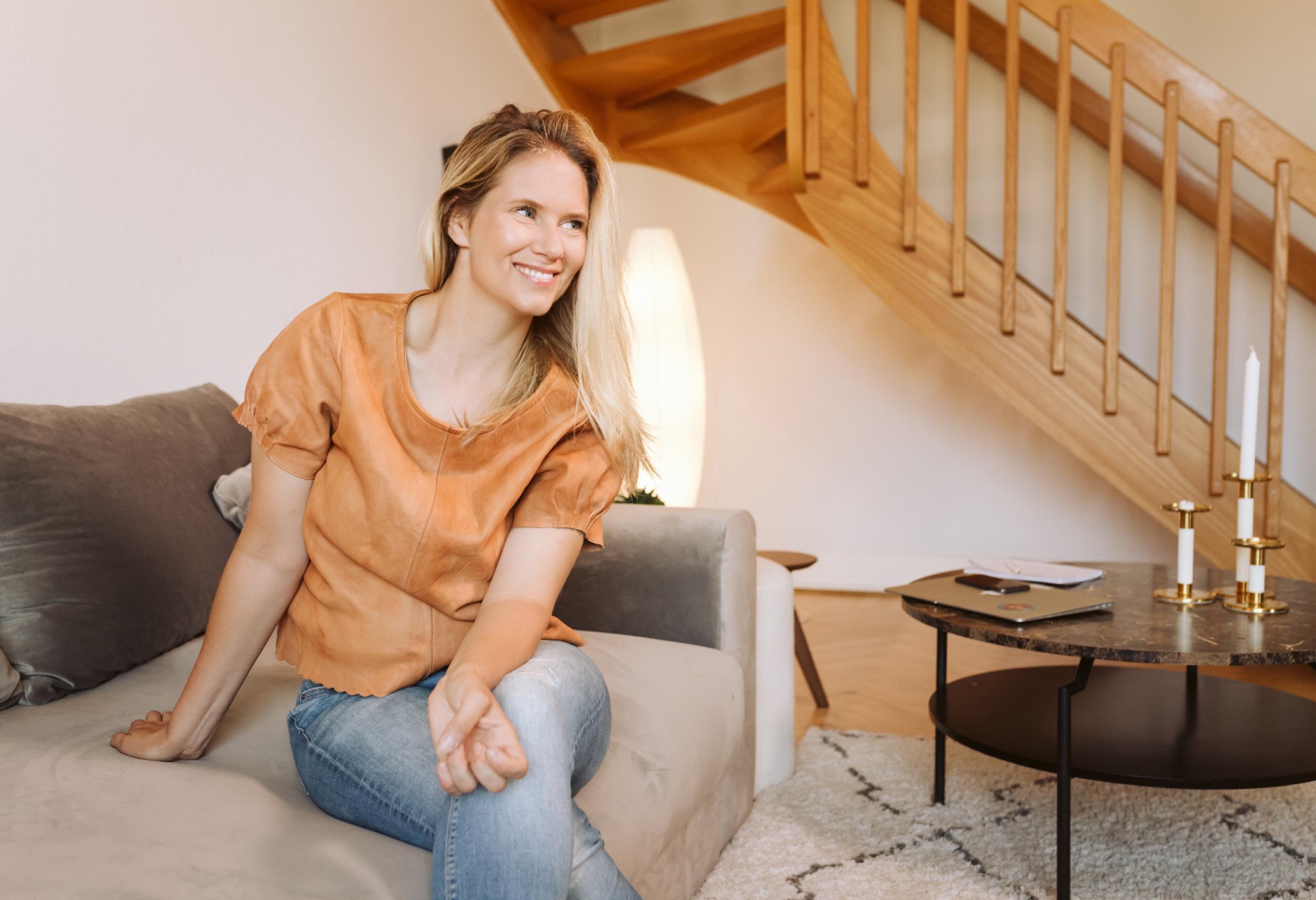 By Adora Trostle
By Adora Trostle
Sara Fernstrom is a successful female founder in the entertainment and consumer product industry who co-founded and serves as the chief executive officer of Blisser. Fernstrom is passionate about creating, growing and sustaining a brand that will drive positive change in the world. Which is why she created Blisser, a digital platform that allows consumers to connect with celebrities, musicians, writers, athletes, entrepreneurs, industry thought and global leaders via personalized messages and videos. Users can purchase messages that teach, entertain and inspire with the added benefit of knowing that the profits are being donated directly to a charity of the talent’s choice. Sara coined the term “blisser” which is someone who enables absolute joy by changing the world. Fernstrom hope’s that Blisser will ignite a movement with the goal of celebrating the very best in arts and entertainment while affecting important changes on the global stage. Blisser allows users to create brand recognition for individual influencers and corporations wanting to have direct access to the impact that Elite Iconic talent, athletes, celebrities and sought after entrepreneurs provide in social media content. This is a huge and bold move for the talent and users to really connect for specific corporate branding goals and philanthropy.
Fernstrom has a proven track record of success with a list of accomplishments including spending ten years as a talent agent for some of the most beloved celebrities in business at CAA and UTA, two years at NBC Universal, four years as CEO of Lyft Brands Group where she gained invaluable operational and global business experience resulting in leading the team to grow revenue by 500% in just a few years, and expansion into 80+ countries, and two years as Co-CEO of publicly listed Swedish fashion brand Odd Molly. This is the story of how she became a leading disruptor in the technology space and how Blisser was born. Sara graduated with a Bachelor of Science from Berkeley College in International Business, Management, and Administration, and began her career at NBC Universal in the Page Program. As part of the program, she rotated across different divisions within NBC Universal, including CNBC, the Today Show, and The Tonight Show, as well as working in public relations and marketing for Focus Features, Universal Pictures, and the Digital
Distribution division. When the Page Program ended, Sara joined CAA, one of the leading talent agencies in the US. and within two years, she was promoted to an agent. During this time, she learned the ins and outs of the entertainment industry and gained an inside look into Hollywood. As her career advanced, Sara was responsible for corporate
development, acquisitions, new digital ventures, and licensing for iconic celebrities, leading digital influencers, award-winning fashion brands, multinational retailers, and cutting-edge companies and succeeded in this highly competitive industry that accepts only 1.5 percent of total applicants.

During the pandemic, Sara relocated to her native Sweden and took the time to reconnect and figure out how to combine her passion for philanthropy and change with her knowledge and expertise of technology and the entertainment industry. She wanted to utilize all of her expertise and contacts to create a platform that will be a catalyst for change by providing consumers with instant access to the world’s leading talent.
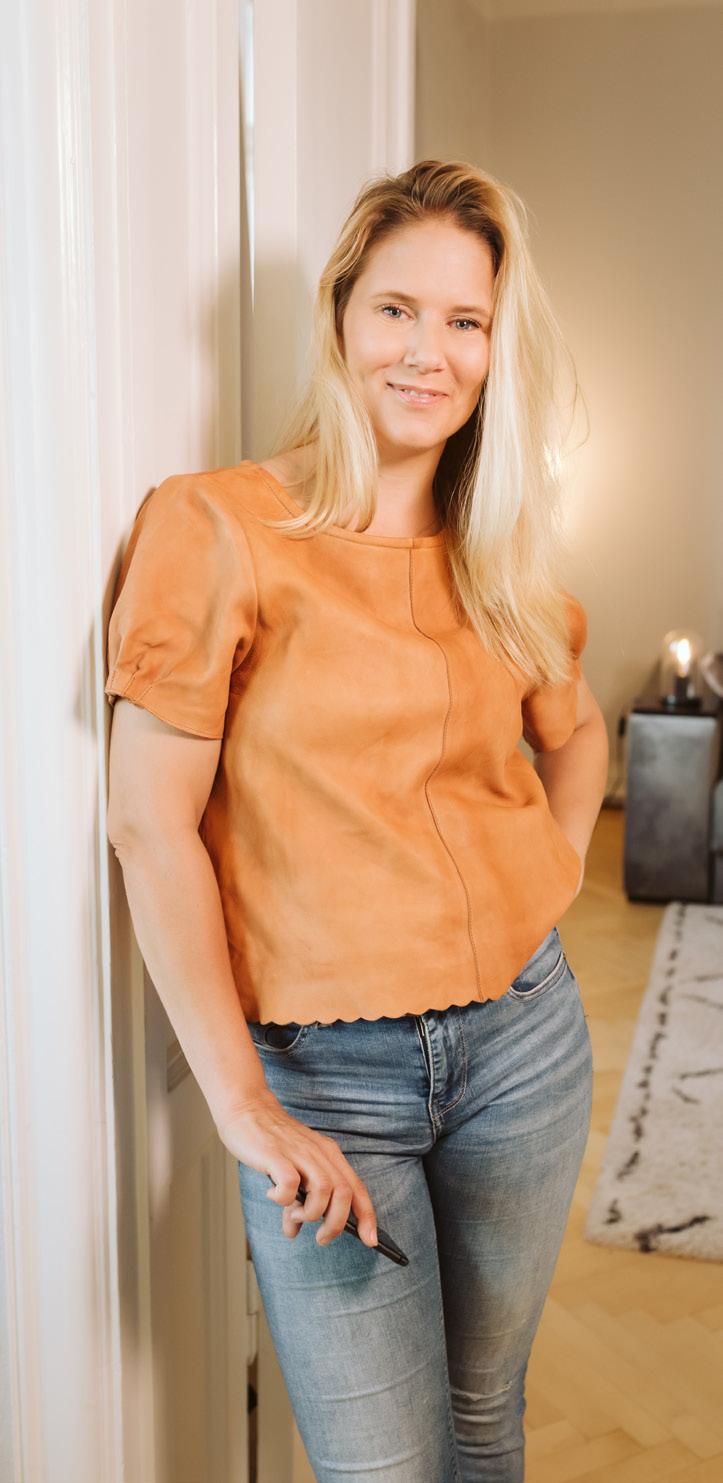
There are so many resources out there for budding content creators. And if a person plays the game right, they can eventually build their own brand around what they are creating. On the other end of the spectrum, many industry leaders who may have already been in the limelight, are using social media and content creation to have a closer and more personal engagement with their fans. Blisser is a platform that allows a curated selection of celebrities, athletes, and talent to be rediscovered in social media to draw a new fan base back them that increases their social media presence and boost their new career opportunities. Today, there are an estimated over 200 million content creators out there, with about two million considering themselves professional creators and the best in the world.
While other companies are also tapping into the opportunities of the creator economy by creating private platforms, beyond
social media, Blisser is revolutionary. At face value, it’s an online platform that connects people with incredible icons around the world. But here’s how it works: If you want advice, inspiration or personal messaging from a celebrity, entrepreneur, or another person you really admire, you can purchase it in the form of video content. Then, Blisser donates a percentage of profits to a charity of the influencer’s choice. The Blisser team is passionate about myriad issues, from helping to combat the terrible and looming impacts of climate change, to making diversity and inclusion a worldwide standard, to fixing a broken education system. Many of the talent we work with donate their proceeds to charity.
Blisser connects users on a personal level with iconic talent and impactful world leaders, to unite them for the greater good. What sets Blisser apart as a disruptor in the industry is their cutting-edge AI technology that enables users to connect with premier talent in a way that no one has ever experienced before as well as the company’s values. Sara calls Blisser “entertainment with a conscience.” From climate change to healthcare, poverty, and education, people will truly be able to make a real difference while celebrating the very best in arts and entertainment. Blisser will enable users to change the world and create an everlasting impact through personal messages that entertain, inspire and learn.
To be part of this promising venture, Blisser is raising $16.5 Million in growth capital through lead investor Athlon Family Office who has acquired a 35% equity share with a IRR of 52.5% to investors, pre valuation of $7.1M. The raise will be in two phases: Phase I is $5 Million by end of 4Q 2022 and $11.5M by the end of 4Q 2023. The expansion allows Blisser to contract with more engaging talent, IT and digital programmers and developers and a massive marketing campaign for influencer, talent, and corporations for brand building.
Building out a subscription platform that will robustly maximize user content and corporate branding. This is the best time for investors to invest into companies like Blisser. The proof of concept and the platform’s growth potential is evidenced with their current revenue stream. This working platform would employ a capital injection to grow and realize its full potential.
www.blisser.com
Meeting the best in the world in any field has always been a luxury reserved for the few. At Blisser, we’re democratizing access so that everyone can get access, learn from the best while driving donations to important charities. Receiving personalized advice, learning from the best in a safe and empowering space is the fastest way to get an answer, gain inspiration or solve a problem and this is what Blisser is offering.
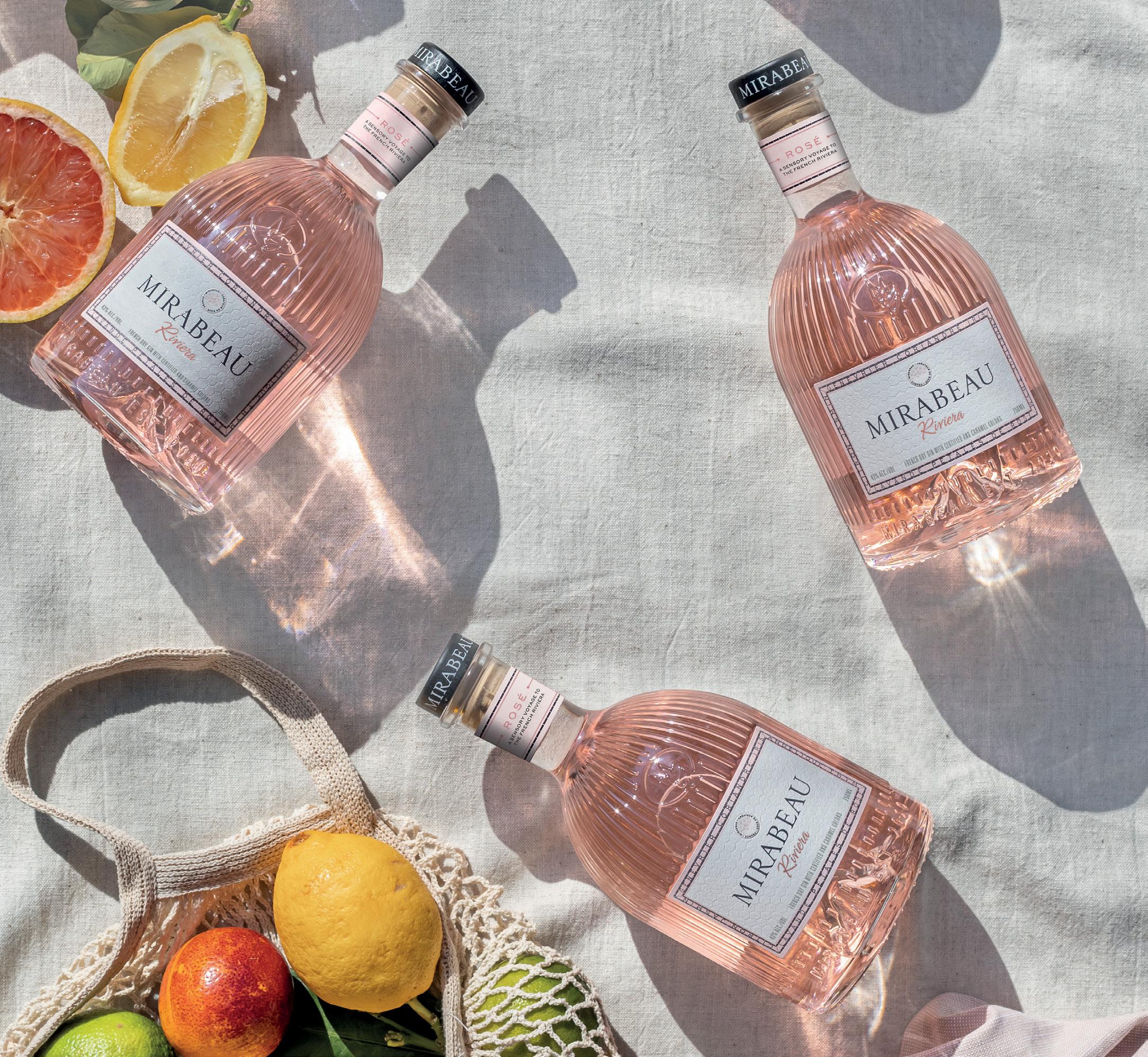
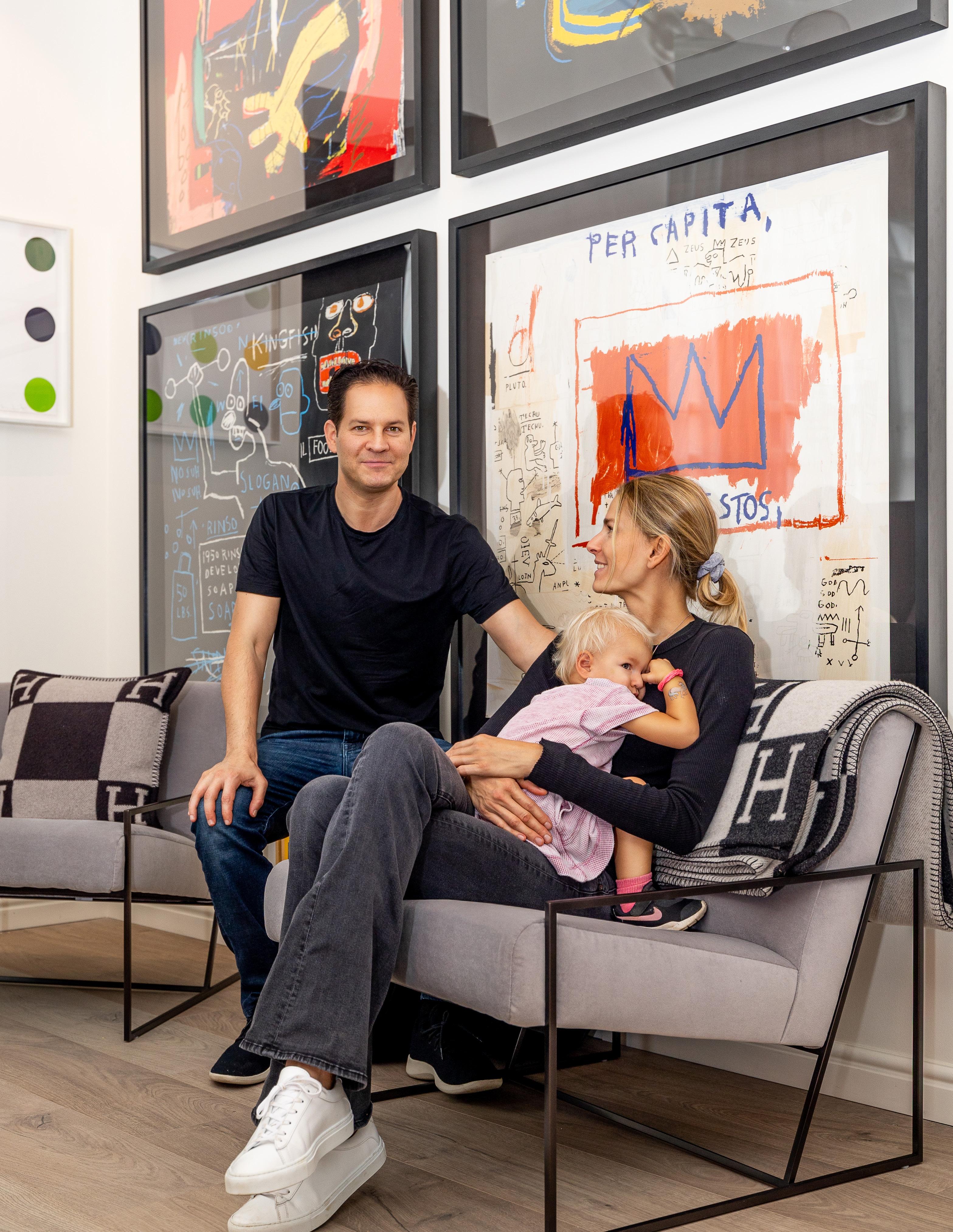
With growing political uncertainty in the US, many UHNW American citizens are starting to look elsewhere for second residency options. Serial entrepreneur Drew Aaron and his supermodel wife Hana Soukupová were fixtures on the NYC social and fashion scene for nearly two decades before they decided they wanted a quieter pace of life to raise their family, and Mallorca ticked off all the boxes. In 2016, after viewing many homes on the island they purchased a rustic Finca in the mountains of Mallorca and established themselves in Spain. The home is named Turmalina, Spanish for the word “Jem” as it was originally built by the Swarovski family.”
Drew’s first venture was Lionsgate Capital, which has become the leading financing firm for luxury properties in the Balearic Islands and throughout southern Spain. Two years later he launched Gallery RED, which is the only gallery in Spain that sells Warhol, Basquiat, and other iconic artists, along with top emerging international artists. Gallery RED now has a total of 18 spaces, 12 open to the public, and 6 by appointment only, all located throughout the Balearic Islands, Gallery RED has become the fastest growing gallery in Spain. A year later Drew Aaron opened Rouge Mallorca, the most coveted luxury boutique that stocks the nearly impossible to find Hermès, Chanel and Louis Vuitton special edition luxury bags and accessories. This year Rouge Mallorca added Rolex to their roster of blue-chip brands maintaining 25 of their most desirable Rolex special edition models and Daytonas, etc.
Their ultra high-end space is located in the center of the best shopping street in Palma de Mallorca and only carriers brand new product.
From an insider’s perspective for fashion, luxury, and art, what is next for this dynamic couple with the Midas touch? Drew Aaron shares his outlook on art and luxury goods as an alternative asset and how to lessen your tax exposure for expats looking to move to high tax countries such as Spain.
I was fascinated by Warhol as a young child; he’s one of my favorite artists and I began collecting the most desirable Warhol prints in the early 2000s, at the time that’s where my budget was. The first pieces I bought were a Campbell’s Soup Can from 1968, and a Warhol Marilyn from 1967. Our neighbors in the Hamptons were one of the largest private art “dealers” in the world. Our neighbors in Greenwich, CT are amongst the most respected private art “collectors” in the world. Having many close friends in the top tier of the art world helped us to become much more astute collectors, putting together the right strategy for investing in art.
If the world came to an end, and the art market plummeted, I would only want works we love to live with. We won't buy a work
unless we truly love it. Whatever the work is, if it's something that I wouldn't hang in one of our homes, I won't buy it. We love Basquiat, Warhol, Jeff Koons and George Condo. Gerhard Richter is an example of brilliant established artist, whose price should only increase as he is in his senior years, and is arguably one if not the most important living artist today. It would be interesting to see an A+ Gerhart Richter abstract bild, a large-scale Calder mobile, Twombly or a beautiful de Kooning canvas in our permanent collection, as these artists are clearly amongst the best to invest into and are unique from all our favorite artists that we've been collecting. The most important overall philosophy in collecting is “Only Buy Unique Works”. It does not matter if it is a large-scale painting , sculpture, or small work on paper, if it is a unique work, it will always be more special and hence should appreciate more in value when looking at similar works or that are of larger editions.
The more established an artist is, the more we are willing to invest. We are always looking for fantastic works, also the ones that we believe will increase the most in value, despite volatile markets. We are living in scary and unpredictable times with a global recession looming over the economy and all markets will rise and fall, but Christie’s November contemporary art sales exceeded 1.5 billion in less than 24 hours. Between the additional auction results from Sotheby’s and Phillips in conjunction with Art Basel Miami and the myriad of art fairs that happen
simultaneously. Over $5 billion in art sales will have transacted globally in the 4th quarter of 2022. The art market in general has had a steady upward rise in value over the past 20 years and is a great indicator that art as long-term investment is here to stay.
Gallery RED is one of the only galleries in Spain that focus on Warhol, Basquiat, Hirst, Richter and Murakami. From a price range of 10 thousand dollars for a print, to 10 million+ for an original work on canvas, and we have everything in-between. There are many other great well respected galleries in Mallorca, Barcelona and Madrid, we partner and collaborate with almost all of them, they each have their own niche, expertise and distinctive identities.
I think one of the most important factors that separates Gallery RED from many other global galleries is that it was created by a “collector” with a pure “collectors, mentality” and natural love for contemporary art. I still hand select every work we purchase, it’s where I spend most of my time in addition to working closely with our artist’s.
When we launched Gallery RED four years ago, there was a huge learning curve, it

was learning by doing, and a lot of learning from my own mistakes. We brought in great Basquiat and Jeff Koons works, everyone came to our spaces, took pictures and wowed, but very few purchased. I didn’t take into consideration that no one gets off an airplane to Mallorca and says, “I want to go and buy a Basquiat”. They are here for the sun, the sea, Mediterranean vibes, beautiful beaches, hiking, biking, gastronomy and of course the immense culture in Mallorca and Spain. To succeed which was a humbling process and we had to adjust our business model to both top established artists and in addition top international emerging artists, that one day could be the next Picasso. We needed to find some form of special “value” that we offered to our clients, and in the end, what Gallery RED brings to the table is “access”. Access to the best works of the bests international Established and emerging contemporary artists.
I know that digital currency is the future, and I think digital art is an important part of the future as well. However, I don’t believe NFTs have found the right equilibrium in the marketplace yet, and everybody needs to be a
little more patient and see where NFTs will fall into place within the global art market. I think that everyone who has been in the art world for a while is still trying to fully understand what an NFT is, and what the actual value of it is? I'm a very risk adverse person, so currently, I don’t purchase cryptocurrencies, and I’m not actively investing in NFTs. The first six NFTs we dropped about a year ago were for Domingo Zapata, who's a fun global emerging artist and a friend. It was fun to be a part of the action, but when it comes to NFT’s I am truly still trying to understand them.
For us, Mallorca was a big life change. It’s very safe living in Mallorca and we have 320 days of guaranteed sunshine per year. We were going out most nights in NYC for 15 years. Between our involvement in different businesses and organizations, it all grew a little tiring. The rat race scene and too much focus on material things grew tiring. Now we just want to lay low and enjoy the natural life with our children in Mallorca. We love NYC and it’s one of our favorite cities in the world, but for raising your children, Mallorca is one of the best place in the world and it's incredibly

international as well. Our kids go to a British school just outside the city center of Palma, Mallorca, and we live close by surrounded by the Tramuntana mountains in central region of the island. It’s a beautiful and privileged place to live and raise our kids surrounded by nature, trying to keep them a little bit sheltered from the typical major city daily routine which includes more screen time, cell phones and digital devices. My wife grows 60 different fruits, vegetables, and spices on our farm. We rescued three donkeys, and we live a fun life. We are naturally still adjusting, but really love the slower pace and being settled down in the countryside. Separate of the great climate and nature, the doctors and hospitals are fantastic so is the gastronomy. Mallorca is very ecological and focused on the environment and sustainability. I am on the advisory board of the Mallorca Preservation Foundation and enjoy the feeling that we’ve found ways to get back to the island.
I'm also the one who's primarily travelling to the city in Palma most days and am involved in helping oversee Lionsgate Capital, Gallery RED and Rouge Mallorca. We luckily have a very senior and talented Management Team in place, so a lot of what I’m focused on is the future growth strategy. Lionsgate Capital’s President is a former Director of Banco Santander, the largest bank in Spain. We have built a great team and she runs more of the day-to-day show of the business.
How does Lionsgate Capital work with investors wanting to buy property in Spain?
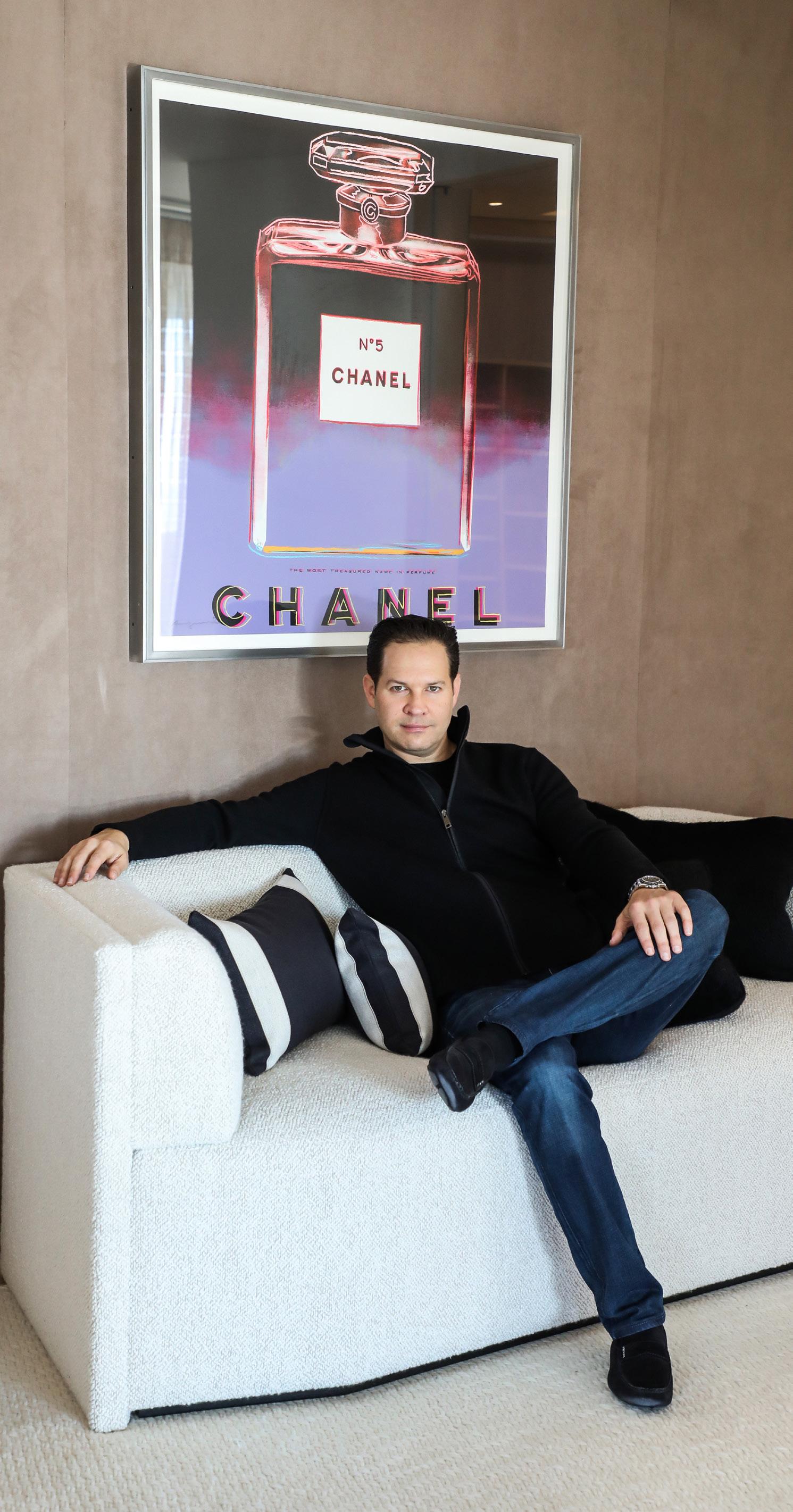
I would say that Spain is one of the highest tax jurisdictions in the world, and the Balearic Islands are specifically one of the highest tax regions of Spain. Many people consider the Balearic to be non-business friendly which creates a lot of barriers to entry. But it’s great to see that many entrepreneurs are successfully exploring new opportunities in the Balearics and are willing to invest in a climate where it's by nature difficult to do international business. To open a business in Mallorca with the strident tax regulations, you must do everything by the letter of the law.
90% of our Lionsgate Capital clients are cash buyers, who have never had a mortgage in their life, and don't need the financing but understand when buying a home in
Spain it clearly makes the most sense. Most importantly, there is a personal wealth tax in the country of Spain of up to 3.45% of your personal assets. So that means if you buy a 10-million-euro property, you could be paying over 300,000 euros per year. We just processed a mortgage on a 26-million-euro home, and we saved the couple over 600,000 euros a year in personal wealth tax. Even if you're a non-resident, when owning a home in Spain you are still liable to pay wealth tax for any assets that you have in Spain. Lionsgate Capital works with the top 30 banks in Spain, and many other private banks, and financial institutions in Luxembourg, Switzerland, Germany and throughout Europe. Many of our clients are not residents in Mallorca, they just have an ultra luxury vacation house.
Art and Real Estate, the dot-com bubble burst in 1999/2000, the global market meltdown in 2008/2009, and Covid and various other unexpected financial crisis have each proven

art alongside real estate in certain regions, to be a terrific alternative investment against other more volatile markets and investing in art when done correctly, can be a safe hedge against inflation. If you buy unique and strong works, by great blue-chip artists, in the end, you will typically fare much better than a lot of other than more traditional investments. Art and Real Estate are tangible investments you can live with and enjoy, a blue period Picasso painting or a flat in London, or home in Palm Beach. One can’t get that same enjoyment out of shares of stock, bonds or bitcoin. A lot of our client’s are interested in investing in art but are initially under the misconception that you need a hundred thousand, or million dollars to buy a piece of art. We have art available from any price range, and specifically with emerging artists is where you can see the best ROI. You can have 100,000 dollars in Apple stock, maybe it goes up maybe it goes down, but you don't have any tangible enjoyment from it. If you buy the right art from the right artists, they should be a great long-term investment and one you can enjoy and experience.

STARRING EMILIE WATERS AT MARILYN
PHOTOGRAPHER: JAMES WEBER
LOCATION: HUDSON YARDS LOFT
HAIR: LOUIS ANGELO FOR KERASTASE @JUDYCASE
MAKEUP: BRIAN DUPREY FOR MAC COSMETICS @JUDYCASEY
VIDEO: DUCK FEENEY
BACKDROP ARTIST: DAVID ROMAN
ART DIRECTOR: FREDO MONTES
Earrings: Giorgio Armani
Purse: Giorgio Armani
Dress: Giorgio Armani

Socks: Falke
Shoes: Stuart Weitzman
Earrings: Giorgio Armani
Purse: Giorgio Armani
Dress: Giorgio Armani
Socks: Falke
Shoes: Stuart Weitzman

Skirt:

Gloves:
Shoes:
Socks:
 Hat: Khia Tullae
Earrings: Dean Harris
Hat: Khia Tullae
Earrings: Dean Harris
Shirt: Giorgio Armani
Bowtie: Giorgio Armani
Jacket: Giorgio Armani
Timepiece: Bulova

Sunglasses: Grey Ant Jumpsuit: The Blonds
Shoes: Stuart Weitzman

Shirt: Agnes B.
Bow Tie: Scotch & Soda
Cummerbund: Giorgio Armani
Pant: Agnes B.
Jacket: Agnes B. Homme
Shoes: Stuart Weitzman
 Dress: A.potts
Dress: A.potts
 Hat: Khia Tullae
Hat: Khia Tullae

Peignoir: Deity

Undergarment: Journelle
Shoes: Stuart Weitzman
 Dress: Son Jung Wan
Dress: Son Jung Wan



Swimsuit:
Shoes:
 Sunglasses: Grey Ant
Malia Mills
Sunglasses: Grey Ant
Malia Mills

Sip Channé was founded by acclaimed TV Host and producer Kavita Channé, a London native of Indian descent who turned her entrepreneurial talents and career to become an award winning wine-preneur.
By Adora TrostleInspired by her travels to Provence and their exceptional wine making skills, Sip Channé’s Provence-sourced blends bring prestige, elegance and iconic French flare to any wine list. To bring her vision to life, Kavita partnered with a family-owned vineyard and worked closely with a seasoned winemaker in Provence. The flagship product, Channé Rosé was born and became an awardwinning rosé true to Provençal tradition. Since its inception, the brand has expanded to include Channé Blanc, an elegant white blend and the collection is available in Florida and New York. Harvested in the undisputed home of premium rosé, Sip Channe’s wines are timeless, versatile and delicately crafted by our specialized winemaker to deliver the utmost quality that is synonymous with the Côtes du Provence region.


Embracing life as a career-driven single mother, Kavita propelled her mission to continue breaking barriers for women and minorities in media, television and business. Her experience in front of the camera runs the gamut – from sideline reporting for the NFL and Fox Sports to hosting “The Chat”, a female-focused daytime talk show syndicated
on ABC and NBC. Kavita has also secured roles in feature films and has appeared on various hit television series including HBO’s Ballers, VH1’s Baller Wives and was a featured correspondent on Designing Spaces on TLC.
Recognizing the importance of parents’ role in education, In 2021 Kavita published her debut children’s book, “Frederick the Hamptons Frog” - a story inspired by an adventurous summer in the Hamptons with her kids, which opened as a #1 New Release and #3 on Amazon’s Best-Seller list. Kavita frequently lends her talents to support nonprofit organizations nationally and across her home state of Florida. She serves on the board of 2-1-1 Broward and is actively involved with the American Heart Association, Veterinarians International, American Red Cross and United Way, among others.
sipchanne.com
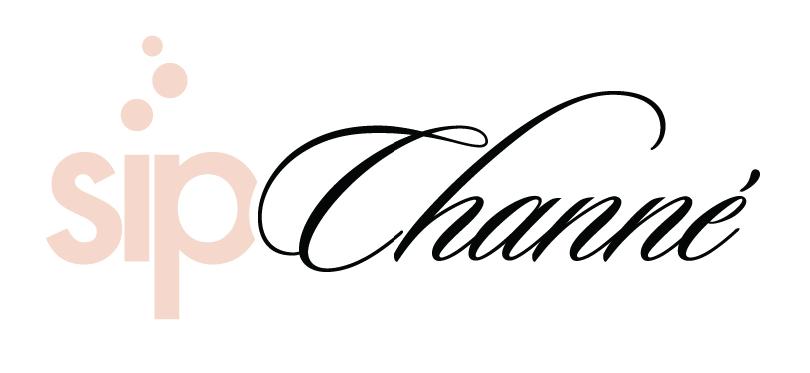

Societe Real Estate is a privately owned bespoke real estate brokerage based in New York City and South Florida with an ever-expanding international reach. From start to finish, Societe delivers a uniquely elevated experience to buyers, sellers, and investors alike, with proven market and negotiation strategies, strict confidentiality, and unrivaled sales expertise.
 By Adora Trostle
By Adora Trostle
Societe Real Estate’s specialty lies in assisting the acquisition or sale of the finest, most well-appointed properties across multiple locations around the globe to meet the needs of their affluent and discerning clientele. Through their relationships with leading worldwide luxury brands, from design firms to five-star hotel residences, Societe fill’s a highly personalized niche in the residential housing marketplace. When transacting locally, their market knowledge and prominent relationships with Brokers and Developers ensure their clients have unparalleled access to inventory. Abroad, Societe utilizes strategic partners to facilitate transactions in other key markets such as London and The South of France.
An award-winning broker who has operated successfully for over a decade, Societe founder Sarahfounder Sarah Williams is considered one of thonsidered one of the most influential female ambassadors in her industry. Routinely retained by premier publications to share her immense market insight, which consumers and builders rely upon, she has become a goto resource among peers and stakeholders.

Sarah possesses vision, a fierce entrepreneurial spirit, irresistible enthusiasm for sales, wealth of knowledge, and sharp eye for design and aesthetics. Active in New York City and South Florida, she is accomplished in developing not only top talent, but strategic alliances across the country and abroad. She demonstrates an inherent understanding of what the old school and new generation of buyers and sellers both want from their modern real estate brokerage — and out of their real estate experience.
Prized for his prowess in pinning down value-driven properties and investments, Ohad Fisherman recognizes that the customer always comes first. Listening closely to their desires and working tirelessly to fulfill them, he doesn’t just take the time necessary to guide his clients toward the most advantageous options available, but to extend astute analysis every step of the way.
Ohad is service-minded and detail-oriented, treating every buyer or seller he interacts with the way he would hope to be handled himself. He credits the discipline he developed in the Israeli Defense Forces as the foundation for the uncompromising integrity he now operates with as a respected real estate sales representative.
Active in New York City and South Florida, Ohad further prevails in his knowledge and new construction sales volume across both locations, with a deep affinity for the diverse architecture and culture each offers.

Connect with the team @sw212 @GinetteBehar @OhadFisherman @SocieteRealEstate www.Societerealestate.com
Possessing an innate entrepreneurial spirit and brandishing a resume bolstered by record-breaking transactions in South Florida, Ginette Behar trades in matchmaking people to properties. Her uncommon ability to locate the seemingly impossible and identify opportunity, to negotiate on clients’ behalf and provide first-class service beyond measure, and most of all, to get the deal done, has led to standout sales and client retention throughout her real estate career.
Ginette takes significant pride in helping her buyers and sellers make sound financial decisions, owing much of her approach to an enterprising mindset embedded since adolescence. She previously earned a business and economics degree from Florida International University, engaged in professional pursuits spanning design and wholesale, and managed tens of millions of dollars in retail revenue.
A trusted source for lifestyle recommendations in the Miami area, where she was born and raised, Ginette is further regarded as highly for her local lowdowns as her market knowledge and savvy.

 By Hillary Latos
By Hillary Latos
Known as “the Davos of the Hamptons,” the annual 1640 Society ‘mogulfest’ family office conference descended upon Southampton this week attracting the likes of Serena Williams who discussed her new VC fund, Serena Ventures which has raised $115 million. The Forum is a unique higher caliber family office gathering as the 1640 Society attracts ultra high net worth families, principals and CIOs for "family to family" oriented panels and discussion on relevant topics.
One panel had a billionaire from Dubai speaking about the fountain of youth and how to reverse your age by 15 years. There was another panel discussing investment opportunities in Latin American panel with 5 of the leading billionaires from Central and Latin America. The Next Gen panel had billionaire father and sons showing us all how to raise unicorn kids, including Tim Draper with his super successful son Billy Draper and Canyon Partners’ Joshua Friedman and his son Spencer. Joe Williams Founder of Keller Williams gave an overview of real estate trends and opportunities. Northwell hospital's leaders gave a post
CV19 outlook, and several billionaire parents including the Siegels and Davis family spoke on the loss of their kids to opiods. The busy day ended with tennis star Serena Williams speaking on transferring her outperformance on the tennis court to venture investing. Other seasoned investors and billionaires in attendance included Hobby Lobby CEO Steve Green, Anthony Scaramucci, Tim Draper, Alan Patricof, Kent Swig, and Peter Cuneo.

Adding to the luxury flair was American accessories designer Kimberly Pucci who displayed her bespoke Italian leather handbags and gifted tennis legend Serena Williams with the oversized Niccolo orange leather tote bag which she sported on the courts of the US Open.

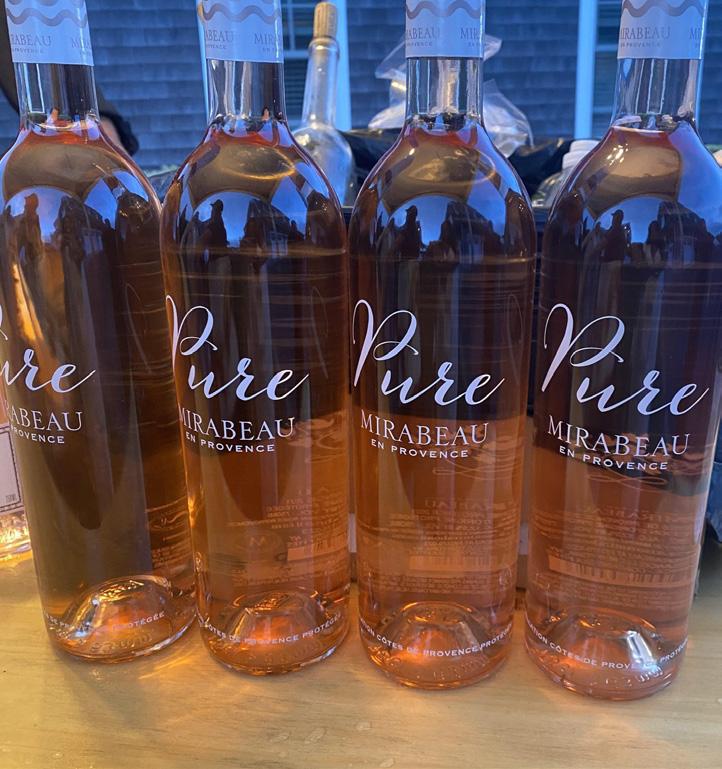
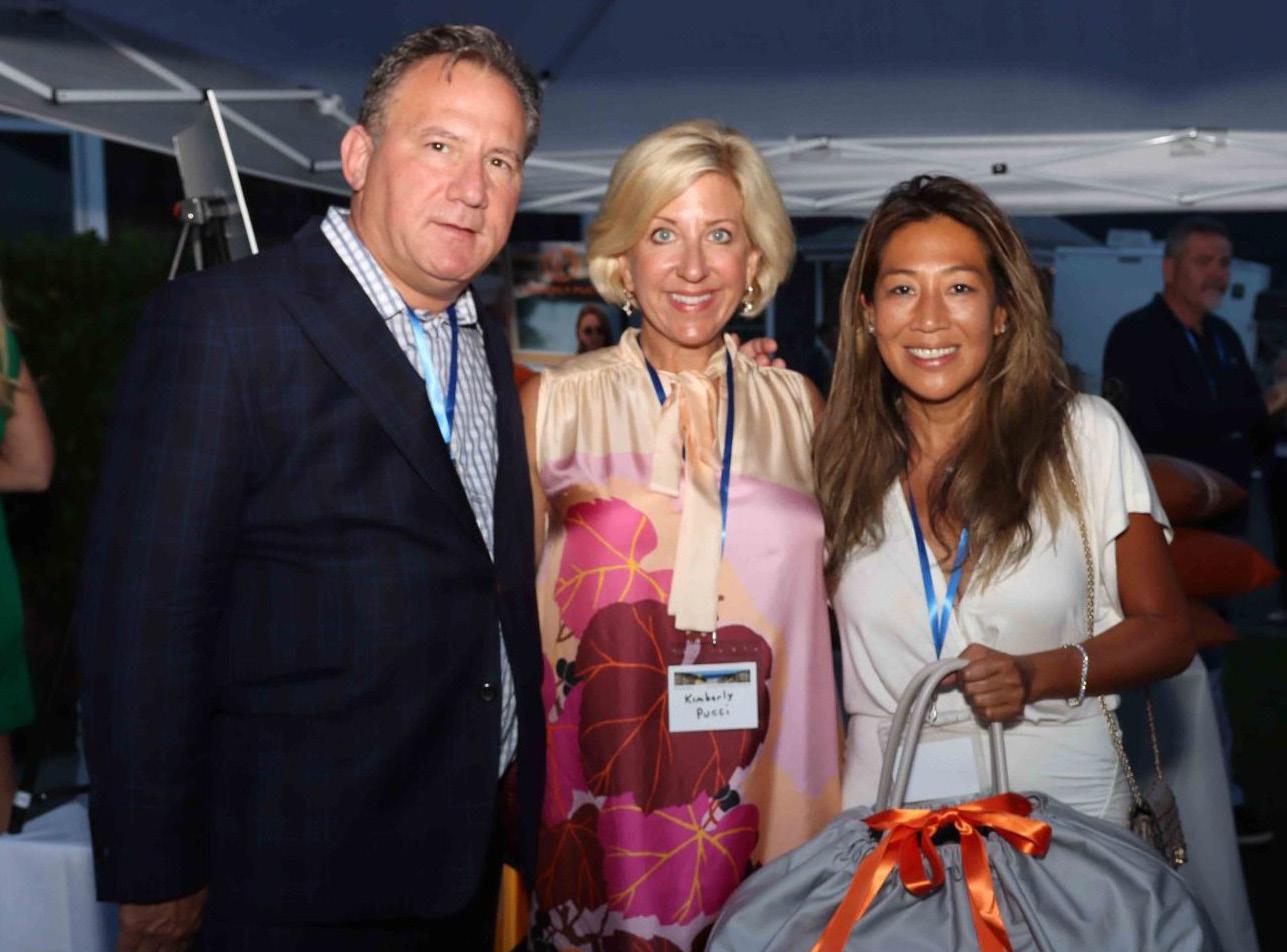
Guests enjoyed performances by pop star Elle Winter and an excerpt from Broadway’s new musical hit Sensation during the cocktail hour. During the cocktail hour guests enjoyed the Provence based Mirabeau Pure Rose wine and Mirabeau Rose Gin, along with red and white wine from Petaluma based Adobe Road Winery founded by professional race car driver and team owner Kevin Buckler who had one of his team’s racing cars on display. WOW Bouquets provided the beautiful floral centerpieces and a special thanks to the Hamptons Employment Agency for production assistance.


One of the highlights of the 1640 Society Family Office conference was the intimate and exclusive speaker dinner at a sprawling oceanfront estate on Meadow Lane in Southampton. Invited guests included business titans and generational family offices who were speaking at the conference such as Alan Patricof, Tim Draper, Steve & Jackie Green, Joe and Janine Williams, Nancy Davis, and Joshua Friedman who came out to fete Serena Williams on the eve of her last US Open tournament who will focus her attention on her VC fund- Serena Ventures upon retirement which has already raised over $110 Million so far this year.
Following the exclusive 1640 Society Family Office Conference, select VIPs enjoyed an intimate oceanfront candlelit dinner party under the stars hosted by Louise Blouin at her extraordinary “La Dune” compound on 366 and 376 Gin Lane in Southampton, which is currently listed exclusively with Nestseekers for a cool $150 Million. Guests toasted a successful conference over Laurent Perrier Cuvee Rose along with a dinner paired with Adobe Road Wines followed by edible centerpiece dessert towers created by WOW Bouquet who also designed the stunning blue and white hydrangea centerpieces adorning each table with staffing provided by Hamptons Employment Agency. The magical evening embodied the splendor of a summer living in the Hamptons!

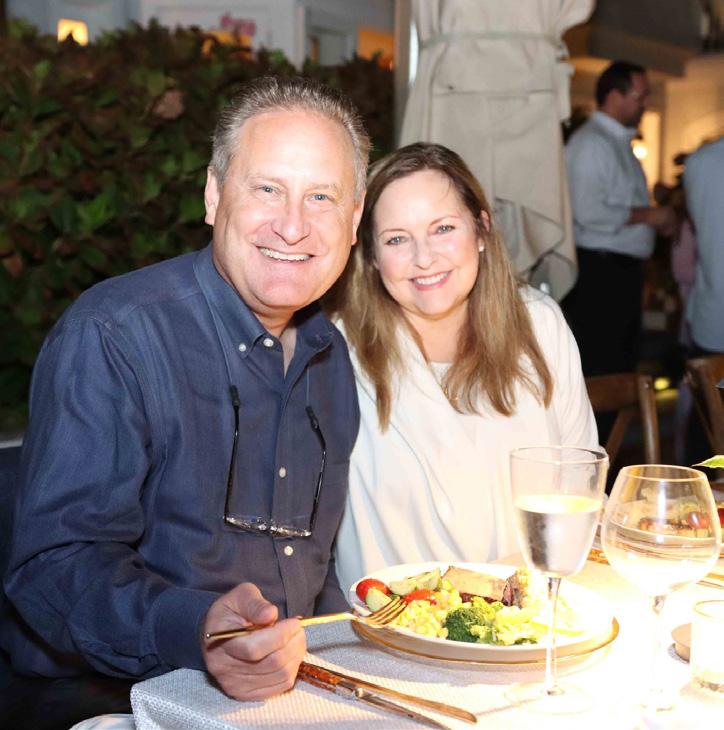



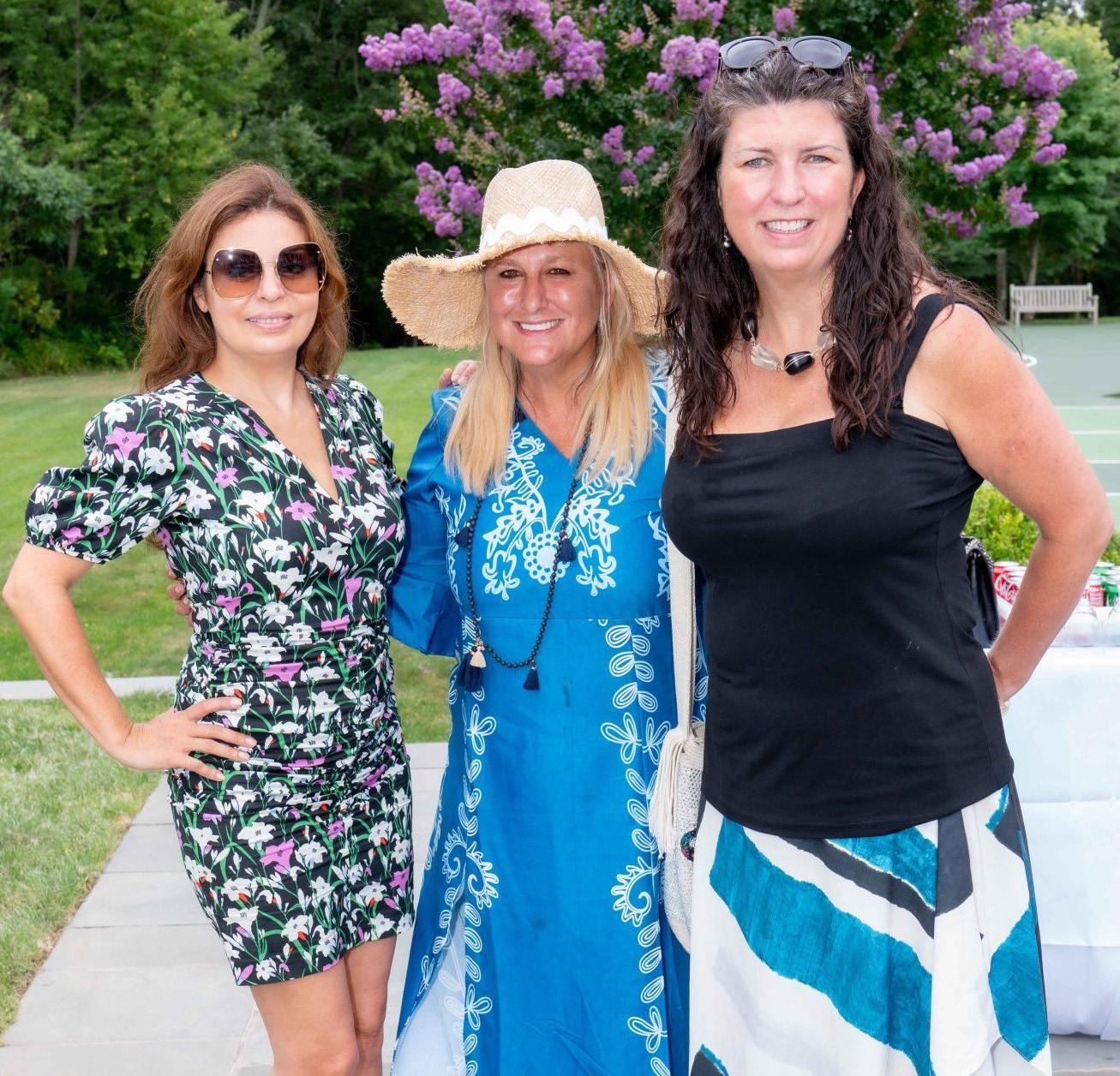 By Hillary Latos
Photos by David Warren, A-cammedia, Yvonne Beri, and Yilin Hsu
By Hillary Latos
Photos by David Warren, A-cammedia, Yvonne Beri, and Yilin Hsu
Kicking off the annual and exclusive 1640 Society Family Office Wealth Forum also known as the “Davos of the Hamptons,” Impact Wealth Magazine threw an intimate Sunday poolside lunch at Libbie Mugrabi’s estate in Water Mill. Co-hosted by Libbie Mugrabi, Joe and Janine Williams, the co-founder of Keller Williams, Nancy Davis- philanthropist and founder of Race to Erase MS and CAN, and Bianca Peters- Fox5 Morning Anchor, guests enjoyed a leisurely garden and poolside soiree with libations provided by Dr. Perricone Hydrogen Water, California wines from Adobe Road Wines, award winning French rose wine and gin from Maison Mirabeau, Brilla Prosecco, and specialty cocktails from Pomp & Whimsy, Montaukila, Vesica Vodka, and Savant Vodka. WOW Bouquet created the edible ‘eye candy’ centerpiece towers comprised of stunning chocolate dipped strawberries along with beautiful floral arrangements that brightened up the summer afternoon. The poolside lounge area was decorated with Kimberly Pucci’s bespoke luxury leather goods and home décor with a raffle to win one of her $2,000+ luxury bags. Guests looking for a quick touch up were treated to botox treatments by Jane Scher, founder of SkinTight Medspa, and select VIPs were gifted with a collection of luxury oral care cosmetics from Apa Aesthetic, the leading aesthetic cosmetic dentistry service that caters to a discerning global audience.

The theme of the lunch was celebrating entrepreneurship and those who are making an impact in our world. Blisser co-founder, Sara Fernstrom, a serial entrepreneur and seasoned CEO with a proved track record, spoke to the audience about her vision to effect positive change in the world. Blisser is a digital platform that allows users to connect with celebrities and global leaders where they can purchase personal messages and videos that entertain and inspire with a mission to change the world, while knowing that the profits are being donated directly to a charity of the talent's choice.

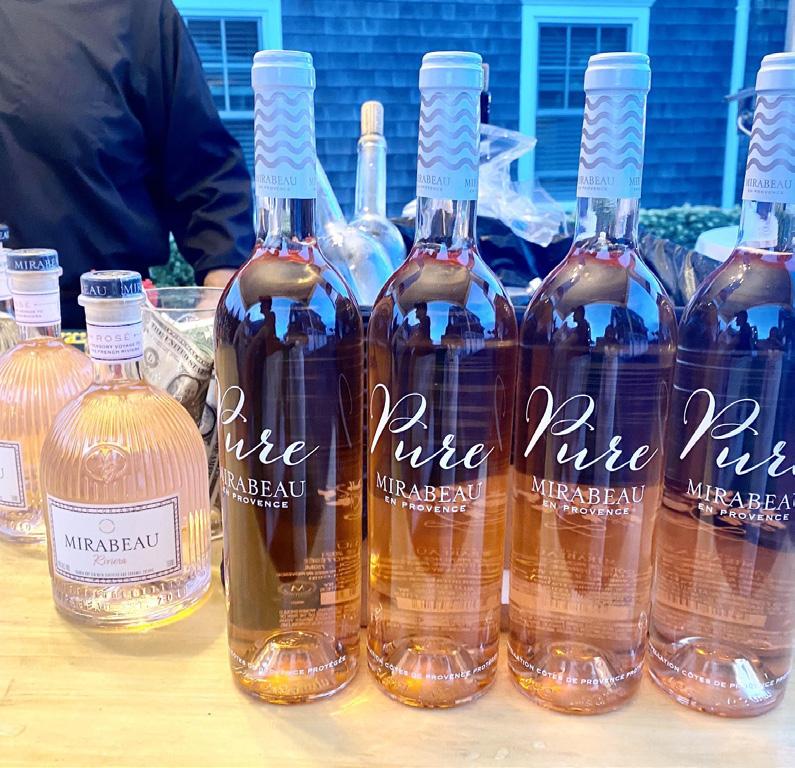



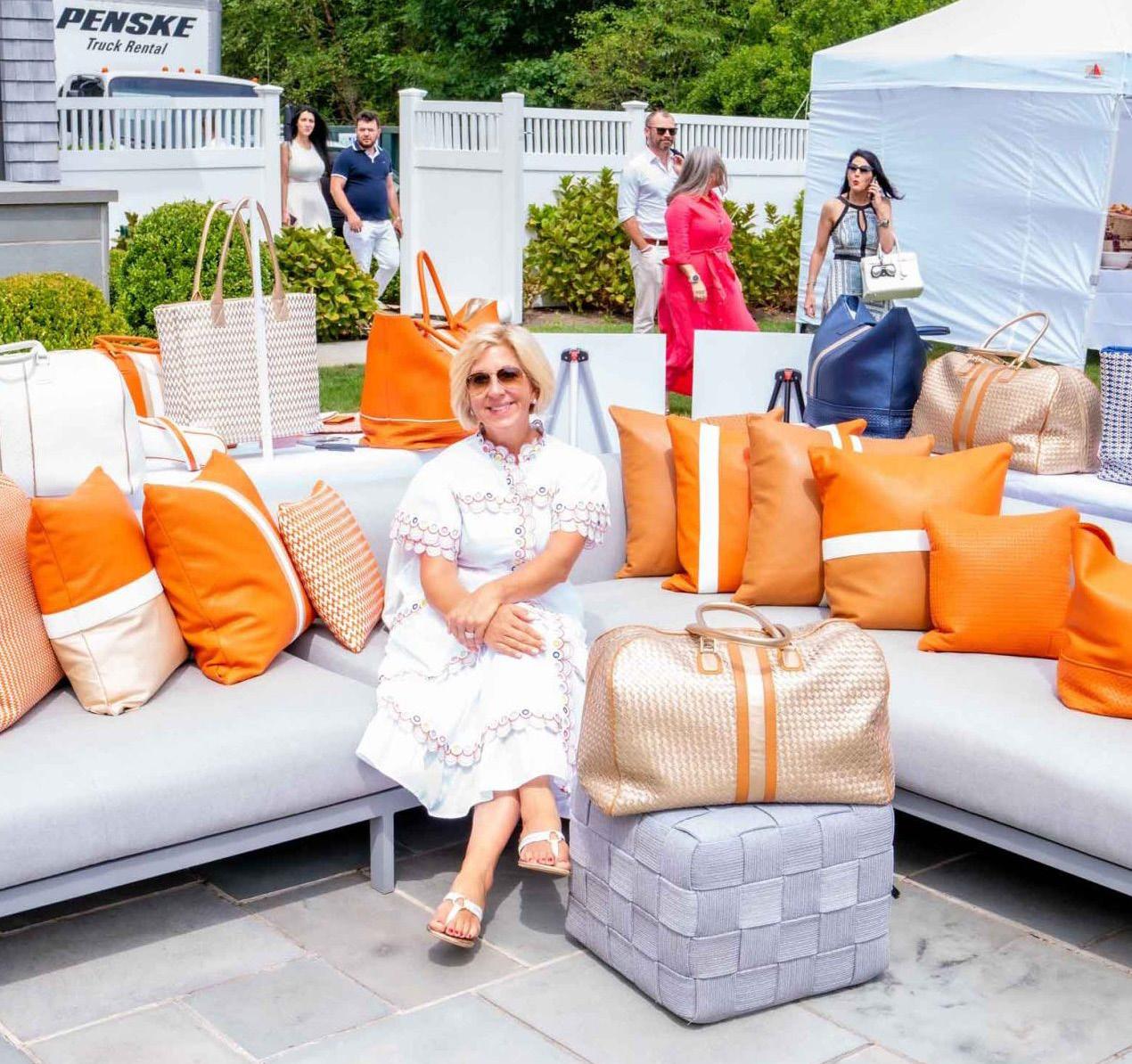
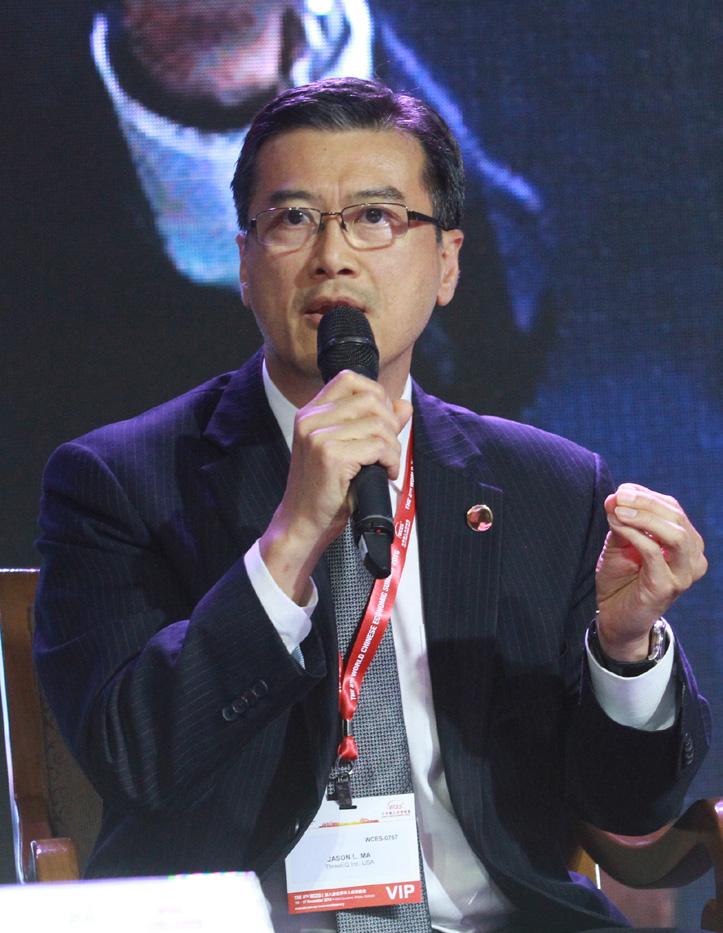
from Harvard Business School, Harvard, Stanford GSB, Wharton, and Berkeley Haas, as well as other high-level events. (The word “college” in this article includes research universities and liberal arts colleges.)
It is wise to see the forest for the trees and not be short-sighted
For most driven high school students and their parents, getting into a great college is typically a primary goal. After that, the goal is to thrive in amazing careers and live fulfilling lives. I would also say that building up their “personal operating system,” soft skills, character, and direction early on is just as important for GREATER life-cycle impact, relationships, and peace of mind.
Why? The vast majority of their college applications get denied by most elite colleges and uncertainty about their future.
Your teens want to get admitted to the best colleges possible, enroll at the best-fit school, and hone strong EQ and soft skills, but doesn’t know how BEST to do so
During the last college admissions season (2021-22), the Ivy League schools and other elite colleges have reported their lowest admit rates in history.
All loving parents, including UHNW matriarchs and patriarchs, want their children to be happy and have a bright future. As fellow parents, we crave sound family relationships and peace of mind. Driven families want to see their kids grow into, contribute as, and connect as positively impactful leaders and human beings over time. This article gives actionable advice on what it takes to effectively prepare the younger Gen Zs of our Next Gens—high school (and college transfer) students—for competitive college admissions, leadership, university life, career, and personal success with well-being. It is based on my past talks in a special event co-sponsored by alumni clubs
Having guided holistically and successfully 1-on-1 hundreds of mainly high-achieving teens and young adults, including my own two now Gen Z daughters, these past 15 years (in my 38 years of industry experience in education, technology, media, and investment since my Berkeley Engineering degree), I celebrate all of the worthy outcomes coveted by many. That said, these results are not easy to achieve without quality preparation.
These days, most young people feel angsty or lost, and high achievers are often stressed and anxiety-ridden. Given a plethora of digital distractions and the pressure to succeed, teens are struggling to find their way in today’s highly competitive landscape.
For example, Columbia University (in NYC)’s freshmen admit rate was a hypercompetitive 3.73%. Columbia is one of the 8 Ivy League universities [Brown, Columbia, Cornell, Dartmouth, Harvard, Penn (including Wharton), Princeton, and Yale]. The admit rates of the Ivies and other super elite universities, including Stanford, MIT, Berkeley Engineering, Caltech, Duke, UChicago, were in the single digits.
From an elite college’s perspective, booksmart high schoolers with lots of extracurricular activities, including private school kids, are a dime a dozen (common). Unfortunately, the Ivies, Stanford, MIT, Berkeley Engineering, and other very elite schools can accept only a small fraction of their highly qualified applicants (e.g. Harvard’s latest freshmen admit rate: under 4%). I have uncomfortably seen some amazing kids—valedictorians with a perfect SAT score of 1600 or ACT score of 36, a 4.0/4.0
unweighted GPA with strong curriculum rigor, lots of extracurricular activities, and various honors/awards—get flatly rejected by a top Ivy or Stanford. These elite private schools have all the power to do so.
But those students who got accepted into and now attend a top college must be fine, right?
In reality, many students who attend Ivy League and other highly competitive colleges face high stress and anxiety. Unfortunately, some are depressed; a few, even worse. (Read “Penn ranked highest out of the Ivy League for mental health—with a D+.” Also, view “The myth of the Ivy League.”)
Back in high school, most of these students
and their parents shortsightedly worried about elite college admissions or were obsessed with the college admissions hype. They were somewhat “brainwashed” by the media or by college counselors and consultants with their own limiting beliefs. The students didn’t build strongenough emotional, social, and leadership intelligence. The families didn’t see the forest for the trees. Now these students face incessant competition and feel lingering “imposter syndrome.”
I believe that college ISN’T your kids’ destination but is PART of their journey. It is essential to think longer-term THROUGH college, NOT myopically just AT college. College is actually a stepping stone to your
kids’ greater career and personal success and growth for decades to come!
So, just what does it take to get admitted to top colleges, enjoy (social and competitive) college life, and prepare for career and personal success with well-being?
It’s about the QUALITY of your academic and personal story, character, and storytelling that match the target schools’ mission and goals. As mentioned above, gaining admission to fiercely competitive U.S. elite colleges is difficult. There are many “high-achieving” students with strong grades, high test scores, and lots of worthy activities who compete for the same outcome. Honestly, given this highly competitive landscape, what students need is trusted, third-party, high-quality guidance to unleash their full potential, actualize their best selves, and achieve the greatest outcomes with well-being.
A reality is that, once kids become tweens or early teens, they begin to NOT fully listen to parents, and parents simply don’t have the top-notch skills to guide them (despite being successful captains of industry in business). With over 20,000 hours of successful coaching, mentoring, writing, speaking, and applied research experience under my belt, I have seen all sorts of patterns of successes and failures. I would say that, besides academic and standardized testing performance, some of the high school and college prep success ingredients include the following:

1. Starting early with trusted, thirdparty, top-notch guidance.
One of the worst and common mistakes by so many families is starting LATE, with the belief that their kids’ academic and nonacademic performance and activities thus far and/or their attendance at private schools are sufficient.
They don’t realize that most school and independent counselors (e.g. former elite college admissions officers) actually have LIMITED skills and sophistication in the real world. These include both private school counselors and certainly often overloaded, even less-skilled public school counselors. And at that point (e.g. right before the college application season in the high school senior year), their children’s pragmatic emotional,
social, and leadership intelligence (“3EQ”), stories, soft skills, and/or other vital ingredients actually aren’t that strong, competitive, and differentiated. A serious disconnect.
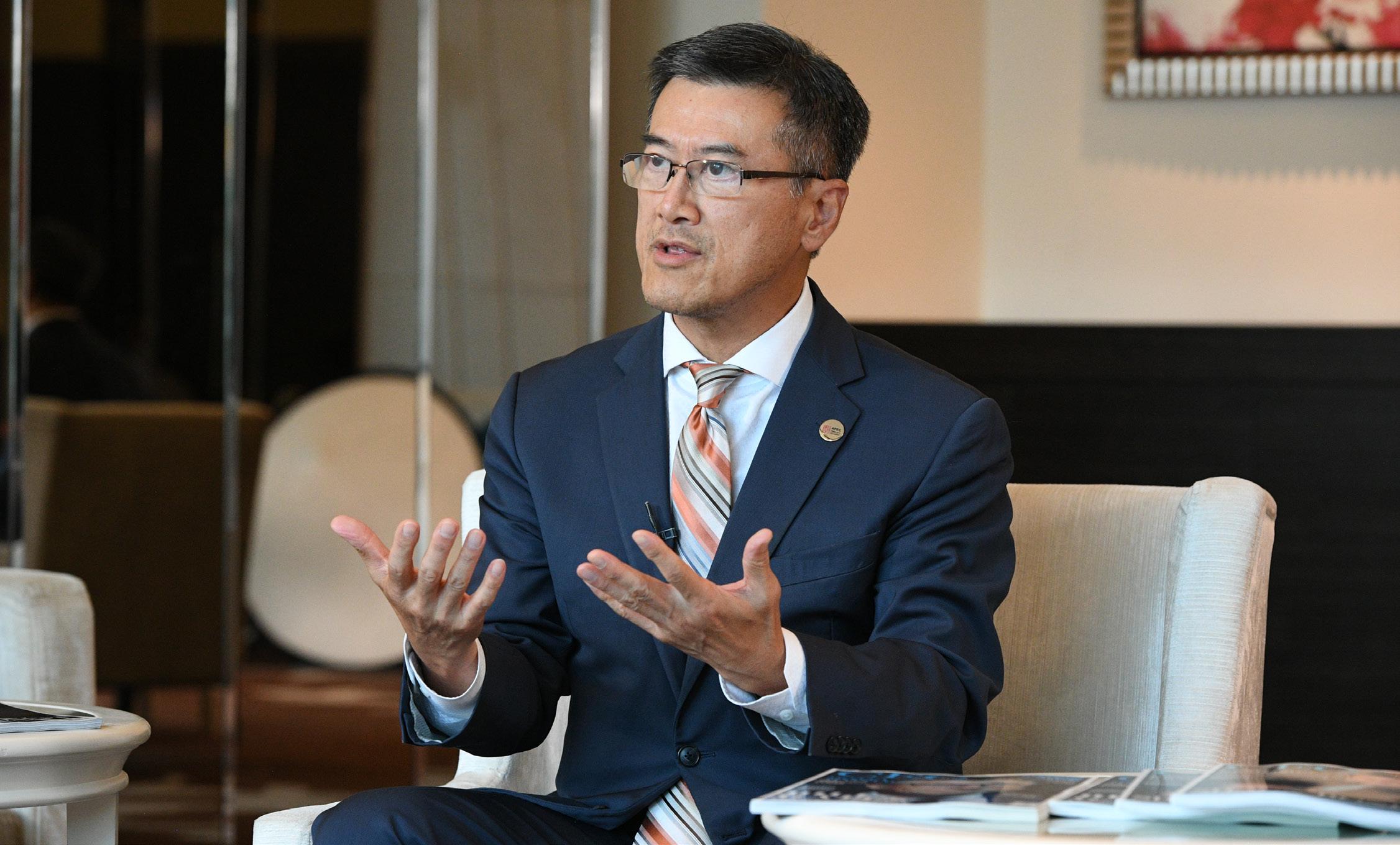
Once these families awaken to this fact or realize that the elite college process and criteria are more complex, (hyper) competitive, and demanding than expected, stress really hits them. These students and their parents then sense (major) opportunity losses. Sadly, we can’t change a student’s history. Time and time again, I’ve seen these scenarios and patterns in wealthy families that weren’t my clients.
A critical success factor is for families to use a trusted, third-party, topnotch guide—early on.
2. Building good habits and a growth and contribution mindset.
Truly successful, high-achieving students have built sound habits and a growth and contribution mindset, which is more profound and useful than just growth mindset. Similarly, 3EQ is deeper and more pragmatic than just EQ. The humility
to continuously learn and improve is key—for both students and parents.
I value integrity, contribution, growth, connection, and a passion for excellence, and help instill these values in my students. They have also developed not only sound time management skills and an uncanny ability to focus (despite online distractions), but also a few sustained, genuine interests (“passions”) pursued through the bulk of their high school years. They have built strong character traits, a “personal operating system,” soft skills, and an empowered direction that would add value to and help inspire the community of peers, faculty, and other souls in high school, in college, and beyond.
3. Finding an inner voice and expressing it powerfully.
My successful students are coachable, committed, and decisive, and we have helped them learn and improve on listening and expressing themselves effectively and authentically. This includes writing cogent, powerful college app essays, building good relationships with key people, and garnering outstanding third-
party recommendation letters. Of utmost importance, essays and rec(ommendation) letters are key opportunities to communicate a student’s values, attitudes, and goals.
They give the applicant a personality and facilitate the admissions staff to choose the students they want. To produce authentic, high-quality writings that stand out from the crowd, a student must have life experiences upon which he/she has done deep reflection, emotional maturity, and lots of practice thinking critically and communicating orally and in writing with a helpful support cast.
These days, applying to ten or more colleges is common. High school seniors (and college transfer students) end up writing dozens of essays, as well as short takes and detailed college app forms, and engaging in some private school interviews during the college app season. “So stressful” are words I hear often from under-prepared college applicants (especially those who start building their stories and skills late)—while they also attack a heavy senior year course load, prepping for AP or IB exams, purposeful activities, and if still not done, prepping for the SAT or ACT.
Teen achievers must learn how to realize their authentic best self, while navigating the complex and often stressful (hyper) competitive college planning and application process. My perspective is that college should be an integral part of a much longer journey. Once again, I encourage families to wisely think THROUGH college (with shortto-long-term or life-cycle gains), and NOT just AT college (short-sightedness). It is vital to help kids understand both themselves and the world, express their individuality and passions both in writing and in speech, and develop their mindsets, soft skills, character, and “personal operating system”—early on.
“I got admitted to Columbia, Mr. Ma!! I am extremely happy. Couldn’t sleep all night. I am incredibly grateful for all your guidance and believing in me from the start! I’ll never forget that. Thousand thanks to you (and Team ThreeEQ)!!!?”
This is an excerpt of a dear student’s texts. With a successful CEO dad, she was accepted into Columbia with an imperfect transcript, no “hooks,” and no SAT/ ACT scores. The latter was especially unusual for high achievers. Yet, Columbia saw in her a superbly strong fit.
How was I able to contribute to this and other types of success?
You could say that I have hacked the secrets to mentoring and coaching teen and young adult achievers for notable success with wellbeing. We specifically focus to:
Hone their growth and contribution mindset, strategies, soft skills, and execution for GREATER, short-to-long-term impact and benefits, even among their driven peers.
Help them build an attractive story, prepare authentic storytelling, and present highly competitive and compelling college applications that maximize their chances for admission to their dream schools, all while minimizing stress, confusion, and anxiety.
“4S” and “3EQ” are my own personalized, 1-on-1 coaching and mentoring framework and techniques that we apply to achieve these outcomes.
4S: Visionary story (including character, which is the sum of all habits and choices)
• Emotional and mental state of mind
• Strategies (academic, activities, test prep, college process, etc.)
• Soft skills (in addition to hard skills) and talent
• Execution
3EQ: Pragmatic Emotional, Social, and Leadership Intelligence
Elevating the “4S” and “3EQ” in my students empowers them to enjoy GREATER lifecycle impact, relationships, and peace of mind in family, in high school, in college, in communities, and in companies and nonprofits (i.e. internships), while enabling them to mitigate risks of painful opportunity losses down the line in our turbulent, ever-changing world. Hard skills may become obsolete over time. Soft skills stay with you a long time. In my experience, personalized 1-on-1 coaching/mentoring is by far more effective and profound than group coaching and “mass-market” webinar or product training. In UHNW families, my work also eases succession planning—with sound family values and without the usual stress, anxiety, and sleep deprivation.
Building a positively strong character, story, and skill set takes years. It can’t be conjured up “just in time” during the high school senior year. Learning to think, speak, and write effectively is a slow-cooking process, not popcorn-quick microwaving. Wisely support your kids to start early, reduce stress and anxiety, achieve greater success with well-being, and live more happily by working with a trusted, third-party, top-notch mentor (virtually) by their and your side. “You are our secret weapon.” I would hear from my own clients. You and your children can do this!
Jason Ma is Founder and CEO of his family business ThreeEQ, a premier education, career, global business, and family office advisory firm that helps client families, companies, and individuals succeed at next levels with pragmatic emotional, social, and leadership intelligence (3EQ). ThreeEQ is recognized as both a preeminent (Ivy League and elite) college admissions, life, leadership, career, and executive coach for high achievers—from Gen Z high school and college students to Gen X CEOs—and a sought-after speaker.
Jason has personally counseled 1-on-1 numerous students who were admitted to all of the 8 Ivy League institutions (Brown, Columbia, Cornell, Dartmouth, Harvard, Penn/Wharton, Princeton, and Yale), Stanford, MIT, Caltech, UChicago, Duke, UC Berkeley, Georgetown, and ALL other elite universities and liberal arts colleges in the U.S., as well as Oxford, Cambridge, Imperial, and others in the UK—helping them succeed with well-being and without the usual stress and anxiety. Today, Jason is recognized as the inspiring Chief Mentor of Next-Gen Leaders in The CEO Magazine, Impact Wealth Magazine, Family Office Magazine, Fashion 4 Development (League of Gentlemen), and some family office summits and CEO circles.
Jason is author of the critically acclaimed book “Young Leaders 3.0: Stories, Insights, and Tips for Next-Generation Achievers.” He was the Forbes contributor on Mentoring Young Leaders for elite college admissions, higher education, leadership, and entrepreneurship success.
Jason is a member of the B20, the official G20 business arm representing the global business community (private sector), serving on the Future of Work and Education Taskforce.

Choosing the right school for your child with a learning difference is essential. Winston Preparatory School (Winston Prep) and its national network of private schools offer a highly individualized learning environment for students grades 4-12 with learning differences, including dyslexia, ADHD, and nonverbal learning disabilities (NVLD). Finding the best school is important, but finding a school where your child truly feels understood as an individual learner can be challenging. At Winston Prep, emphasis is put on discovering who each student is, what their strengths and learning needs are and,
based on their learning profile, designing an individualized curriculum that is grounded in continuous assessment and on-going evaluation by a team of expert faculty and staff.
The feedback from Winston Prep parents is often that, for the first time, their child is being understood. While their child is learning and excelling, parents are comforted by the fact that they have found a community where their child belongs and thrives.

Founded in 1981, Winston Prep has campuses in New York, New Jersey, Connecticut, and
California. Winston Prep also offers an innovative fully online school called Winston Online that applies the same nationally recognized learning method as the campuses do. Winston Online is accessible anywhere in the US.
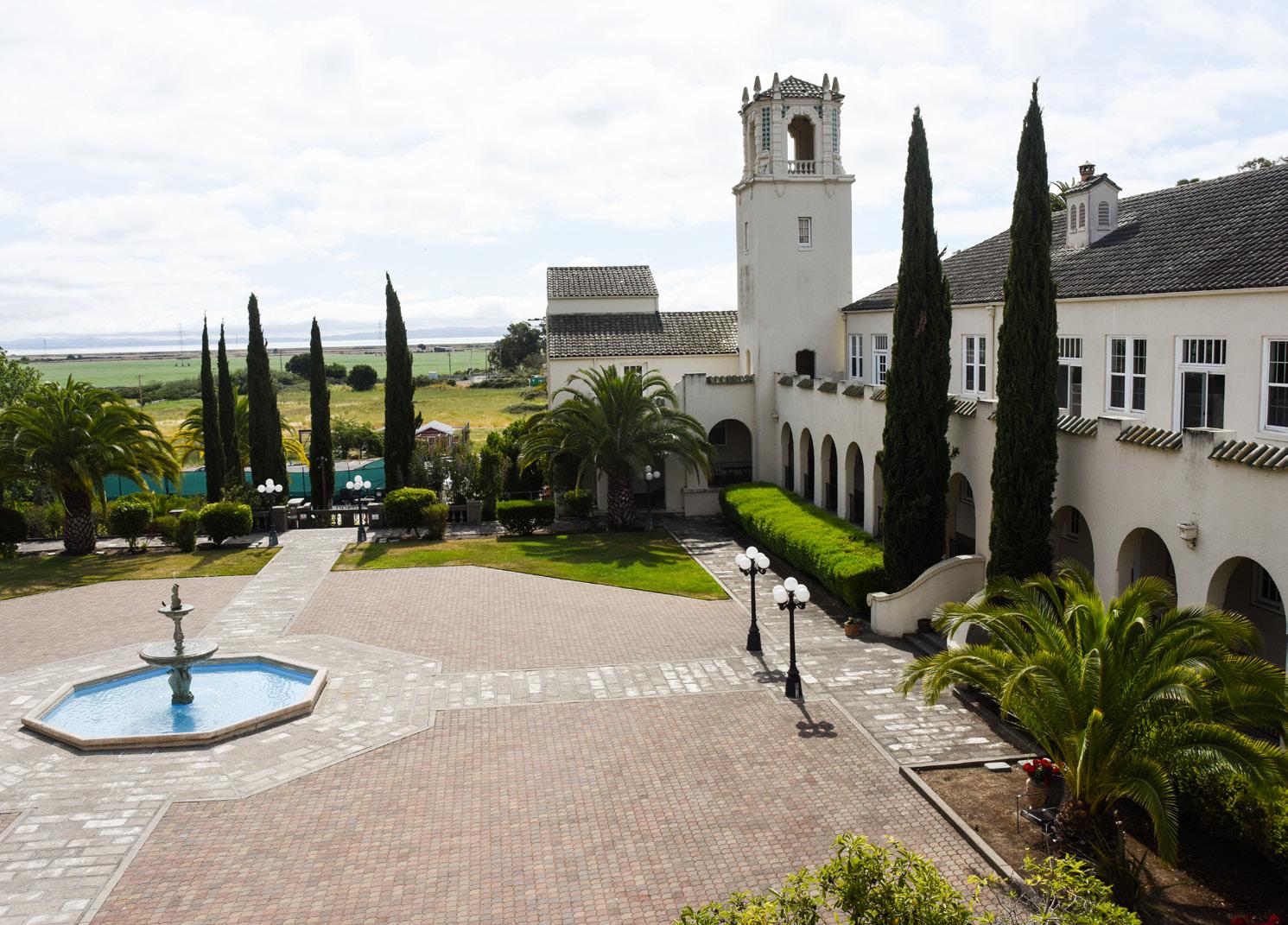
Winston Prep's graduation statistics are stellar and they speak to the strength of the education method. Winston Prep's high school graduation rate is 99.7% whereas about 18% of students with learning differences nationwide drop out of school. Over 80% of Winston Prep high school graduates enroll in a college or university program, while the average nationally is 33%.
What makes Winston Prep unique is its commitment to an in-depth understanding of each individual student. Winston Prep accomplishes this through Winston Prep's Continuous Feedback process, designed to gain a deeper understanding of the students, facilitating constant assessment, remediation, and analysis of each student's response to their individualized program -- while building a strong community.
This process is accompanied by Winston Prep's Focus Program, where students receive daily one-to-one instruction geared towards their individual needs. Winston Prep is the only educational institution for learning differences that provides a Focus Program in the nation. Each day, your child will spend 45 minutes with a Focus Teacher who will dedicate time to know your child as a learner, glean information about their talents and learning needs, interests, and progress.
Focus Teachers consistently share news with parents about how their child is advancing.
If you want to learn more about Winston Prep, visit www.winstonprep.edu and contact an Admission Director for a specific campus.
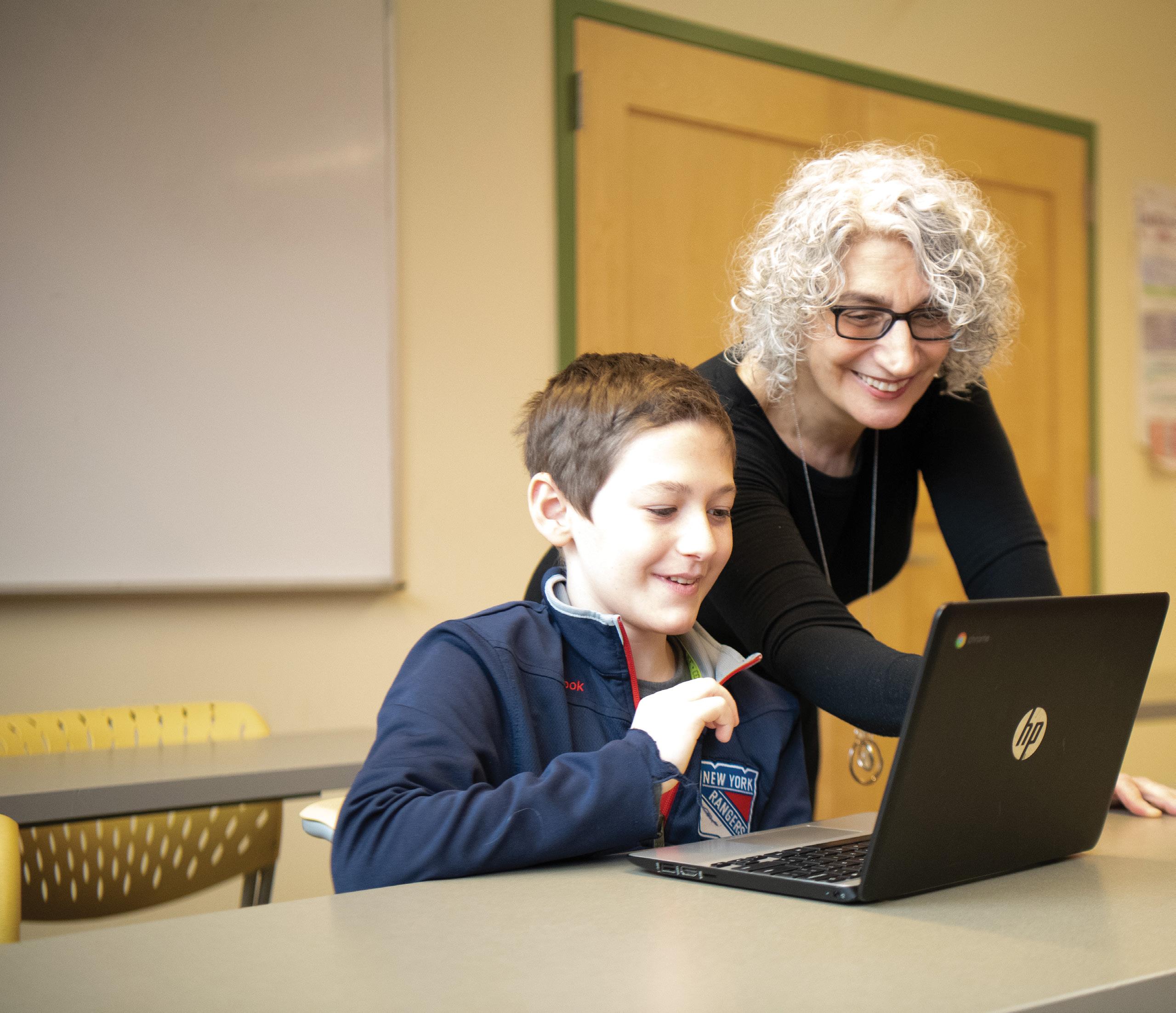
Winston Preparatory School is a leading private school network for students with learning disabilities, including dyslexia, ADHD, and nonverbal learning disorders (NVLD). Winston Prep’s individualized learning model focuses on understanding each student’s learning challenges. Our expert teachers conduct daily in-depth assessments, helping each child advance at a meaningful pace and thrive!
Register today for an open house at https://www.winstonprep.edu/admissions for a specific campus.
New York | California | Connecticut | New Jersey | Winston Online
The Winston Preparatory School does not discriminate against applicants and students on the basis of race, color, or national or ethnic origin.
essential.
The Chinese zodiac predicts the 2023 Year of the Hare will be erratic across the board, including in finance, climate, and politics. Now is the time to implement feng shui principles in your mind, home, and workplace to help you successfully ride out this lunar cycle in peace.
By Pun YinIn published forecasts for the 2022 Year of the Tiger, I predicted the clash of three tigers —confrontations between three leading countries — resulting in financial market volatility. Those who took my advice ahead of that lunar cycle used feng shui to weather the financial storms, instill peace, and take command over personal and professional matters. Expect more turbulence in the year to come.
How can you use feng shui to ride the waves? Take your interior design one step further by tapping into feng shui meridians using a custom application of natural elements, colors, textures, lights, and themes. There is no one size fits all approach. Feng shui harnesses yin and yang, the Five Elements energy you were born with, and the Chinese Zodiac luck cycle to capitalize on your core energy and strengths.
A proactive and protective feng shui strategy will empower and help you overcome turmoil and uncertainty. Here are some strategies to incorporate in the 2023 year of restructuring and rebuilding.
Unity. Use this holiday season to spend quality time with your family and support systems to shore up your confidence, motivation, and focus.
Environment. Invest in an environment that is uplifting, stimulating, and supportive of your mission and overall growth. Shape your destiny by applying Feng Shui in your home and work environments.
Virtual Appearance. Make sure your virtual background shows composure and strength. If you have a commanding presence, voice, or facial features, then use a neutral background and wardrobe to soften the delivery of your message. If you come across as meek, then to be taken seriously, adopt a warm or vibrant background and wardrobe that symbolizes power. In either situation, place background objects in meridian positions that compliment your Five Elements profile so you can feel grounded, supported, calm, and focused.
Diversification. Spread your data, assets, and loved ones across multiple locations or countries.
Bequest. Craft estate documents in a manner that motivates your heirs or loved ones to achieve their fullest potential. Give the gift of humility by shifting them away from entitlement mentality.
Objects. Id entify, gather, and centralize your medications and cherished possessions so they can be moved on short notice. Incorporate spiritual objects that can emotionally support you through this and other transitional periods.
Spending. Rather than pouring funds into divisive political organizations, invest in self, career, loved ones, and physical spaces.
Conserve. Keep significant cash flow both with financial institutions and on hand for emergency use.
Good Deeds. By individually and collectively cultivating good deeds through philanthropic work, you will help others weather the turbulent 2023 cycle and elevate your positive aura.
In sum, use this winter season to recharge by cultivating warmth, stability, and good deeds that will carry you through the jumpy Year of the Hare ending on February 4, 2024.
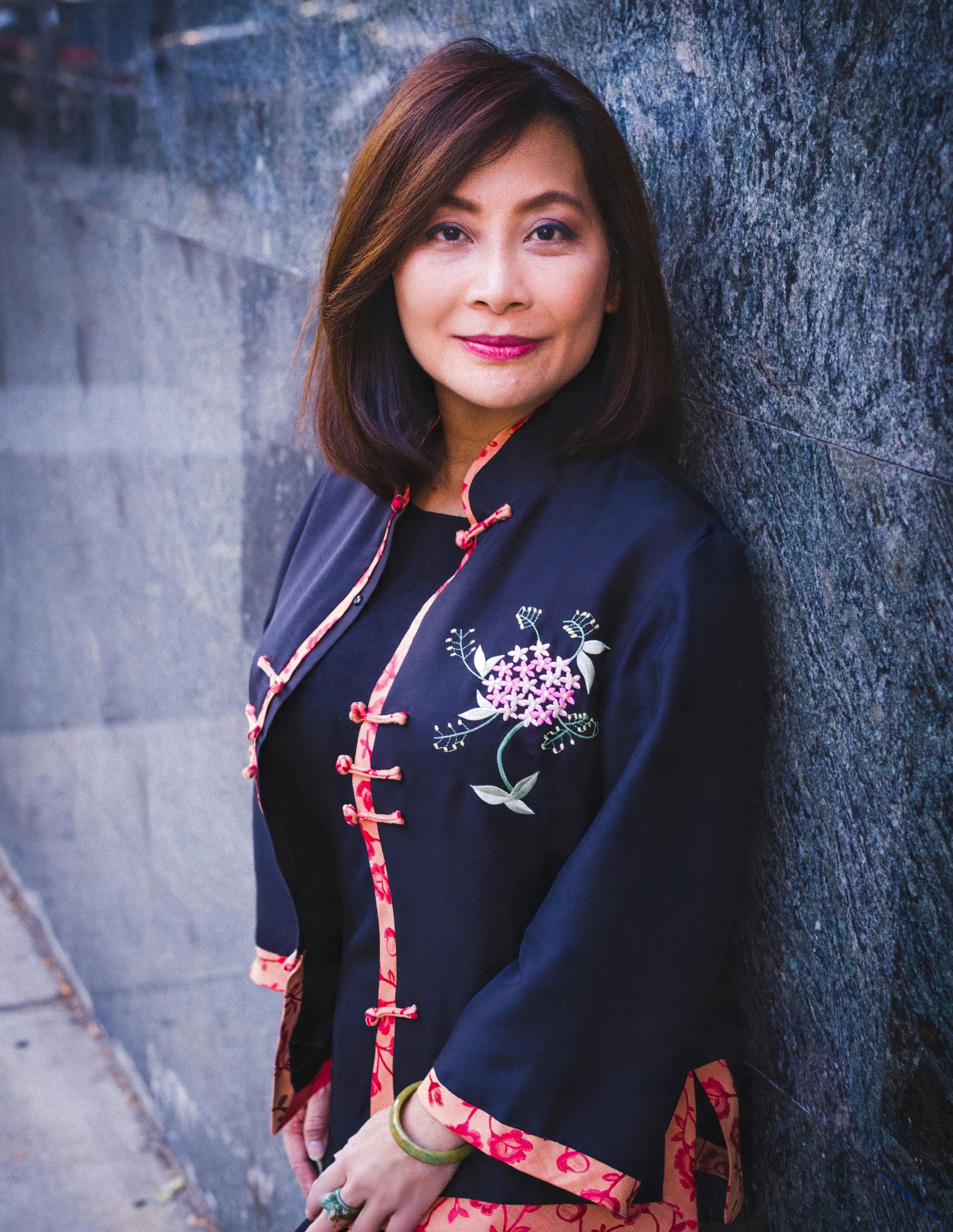 Photographer: David Christopher Lee
Photographer: David Christopher Lee
